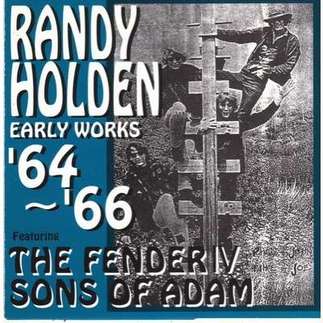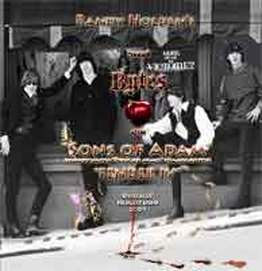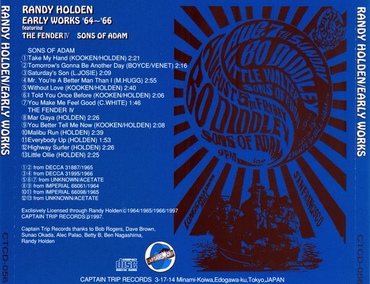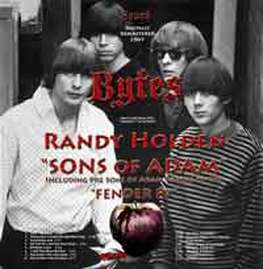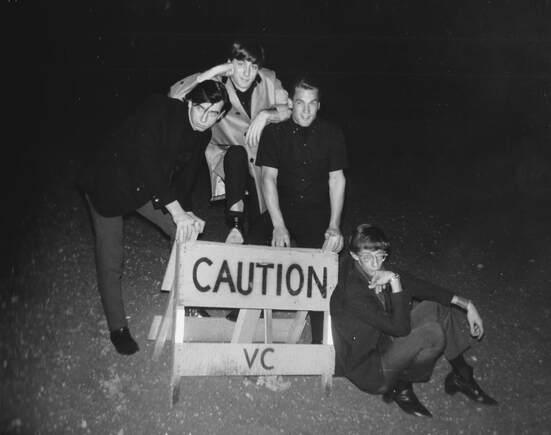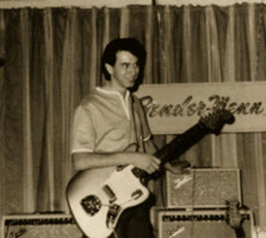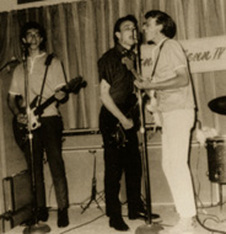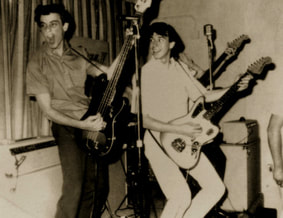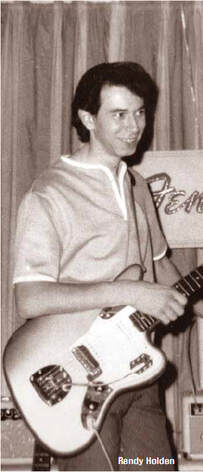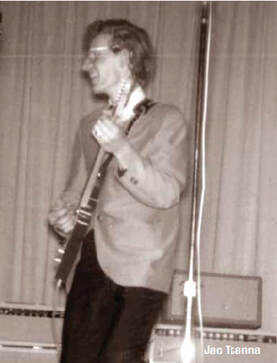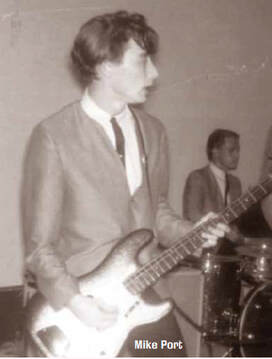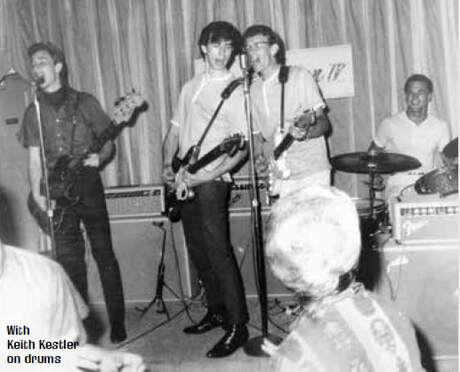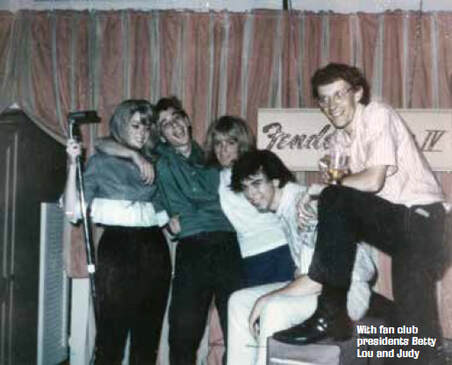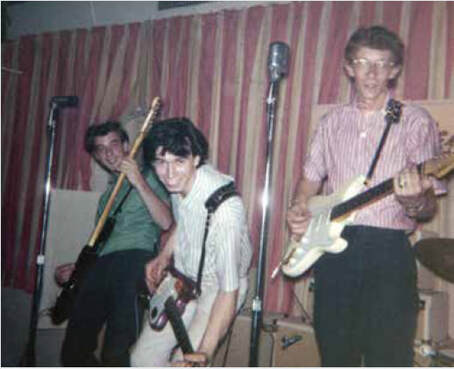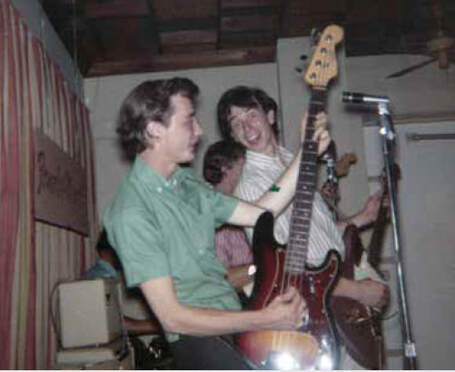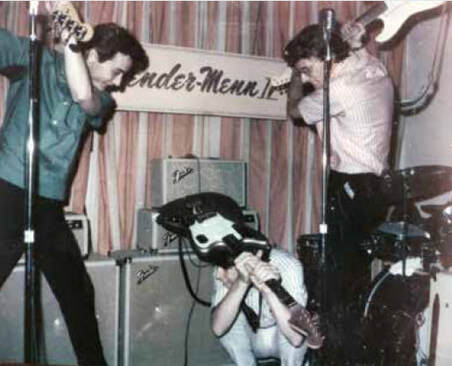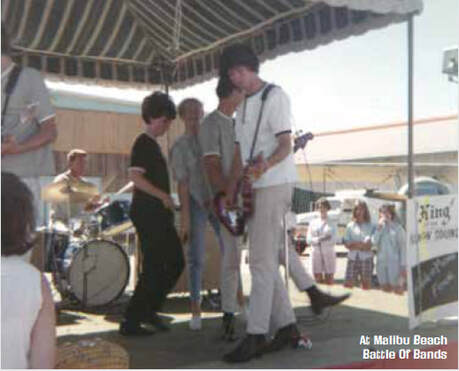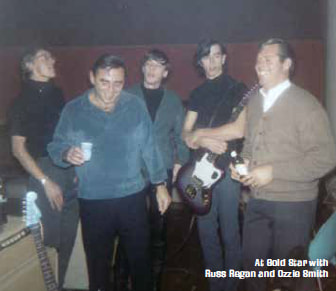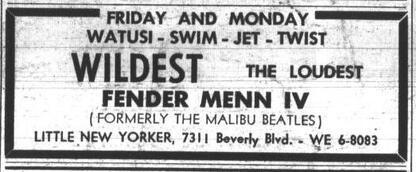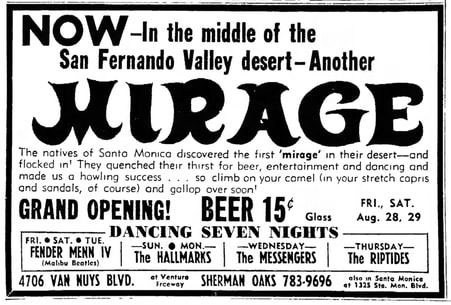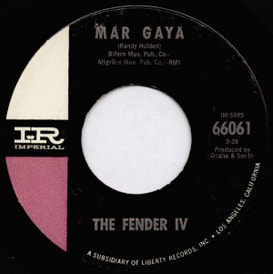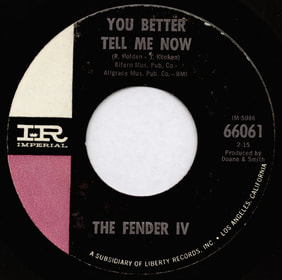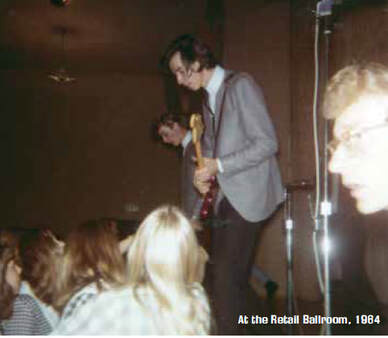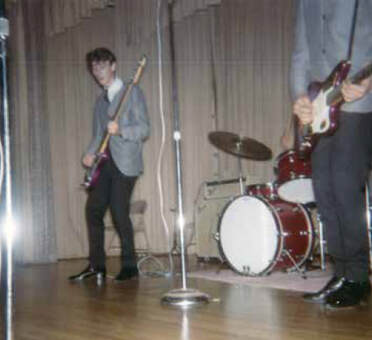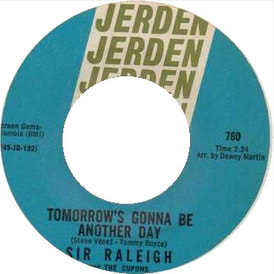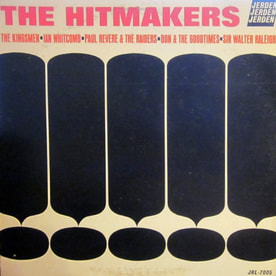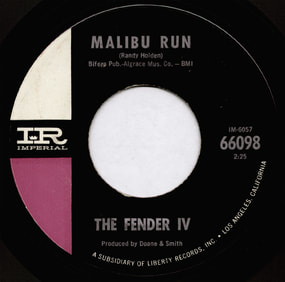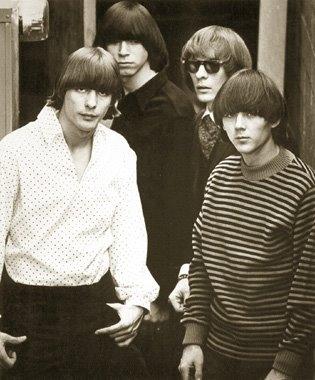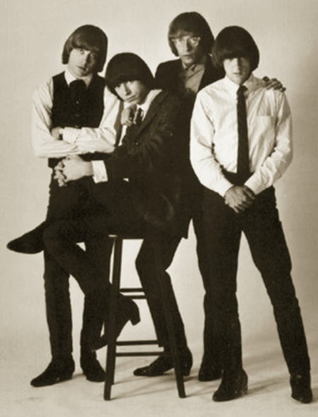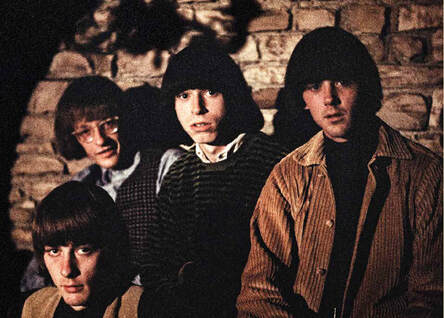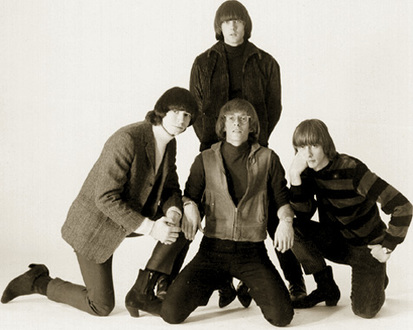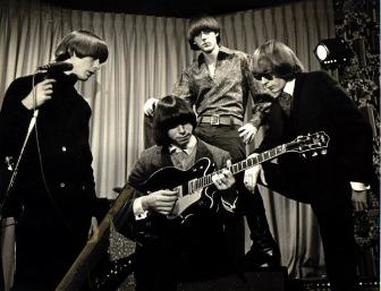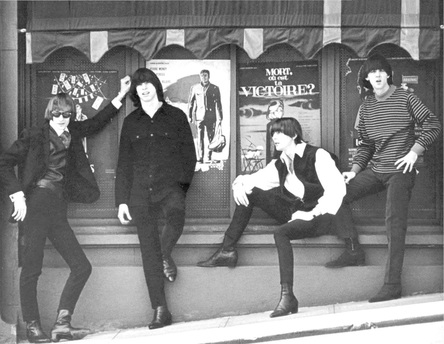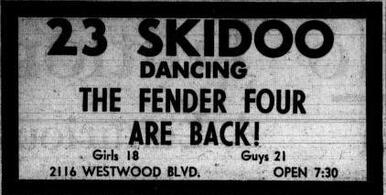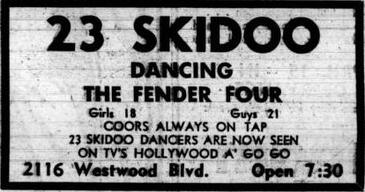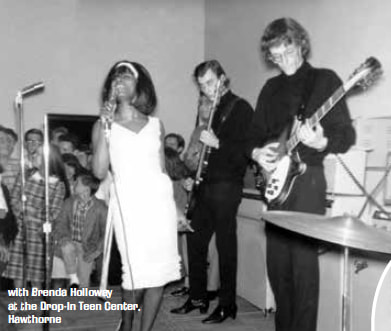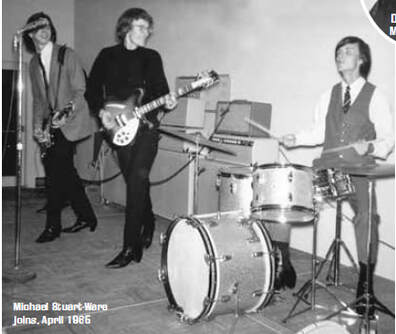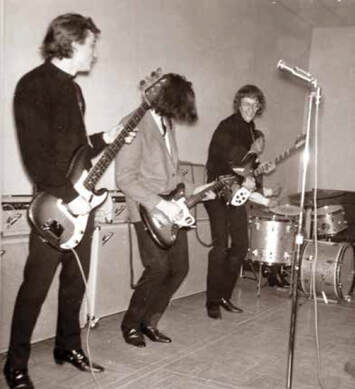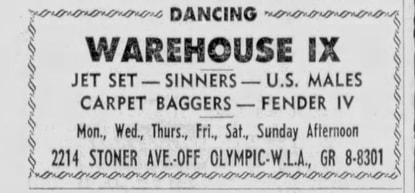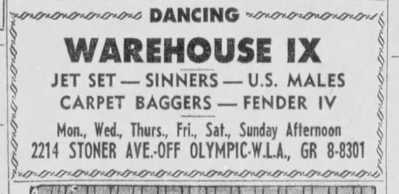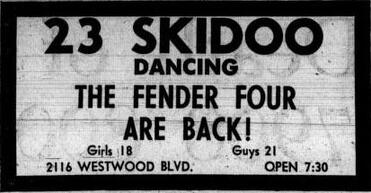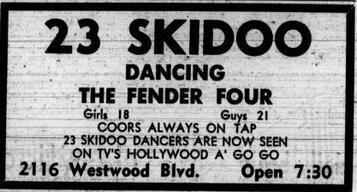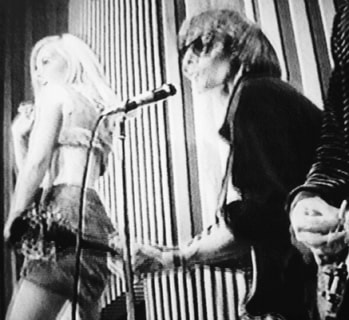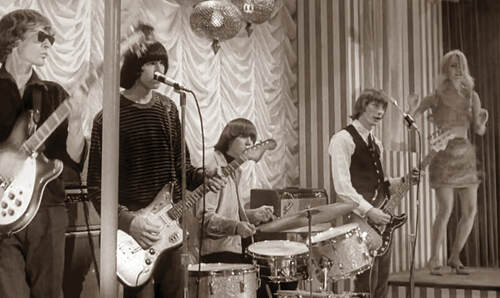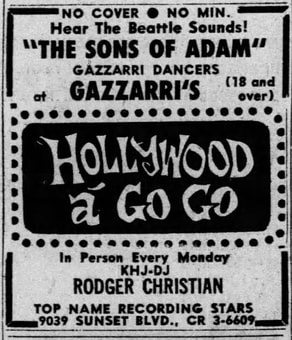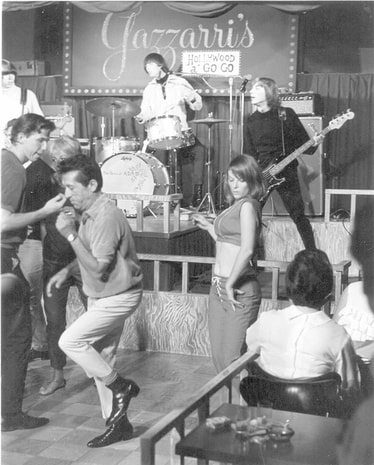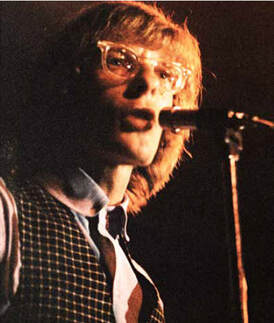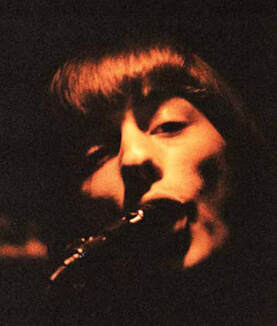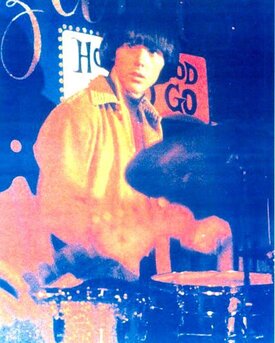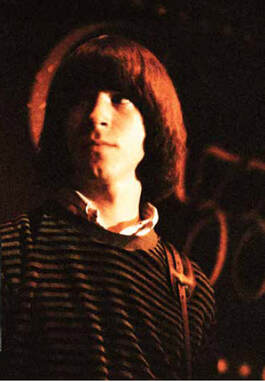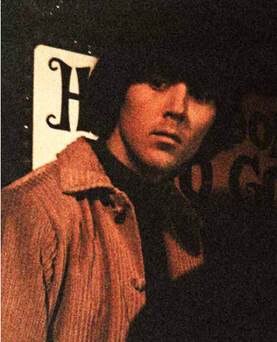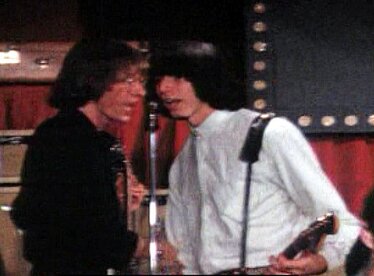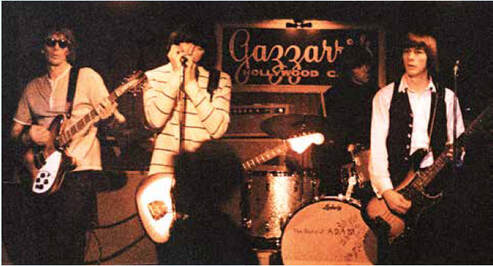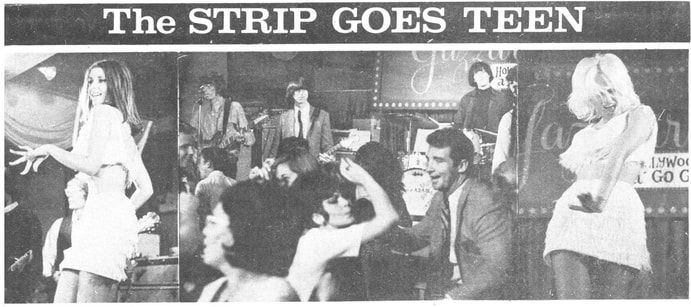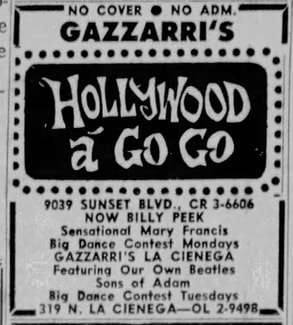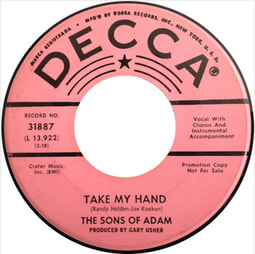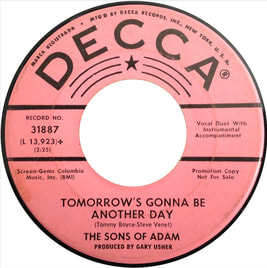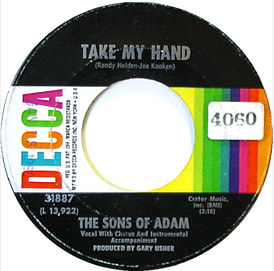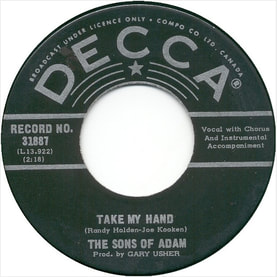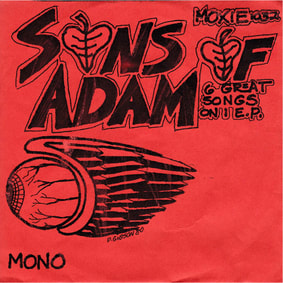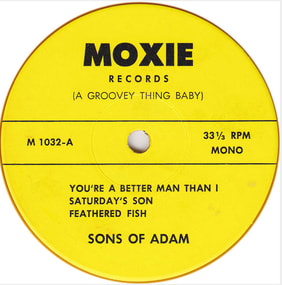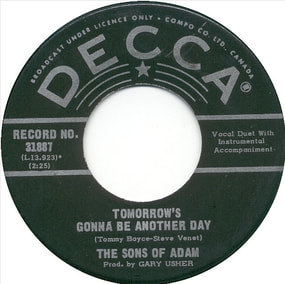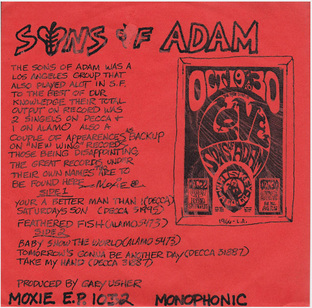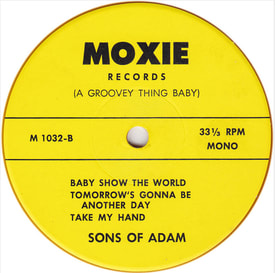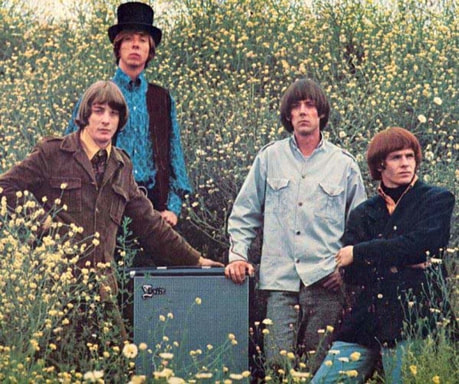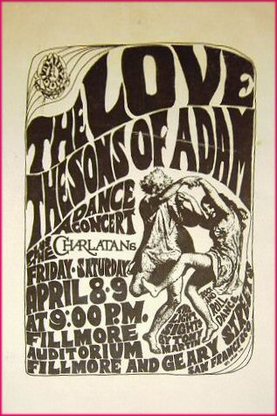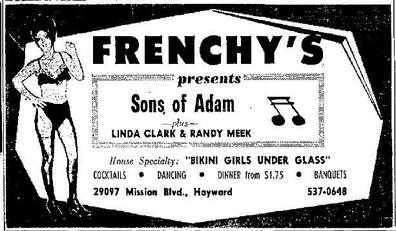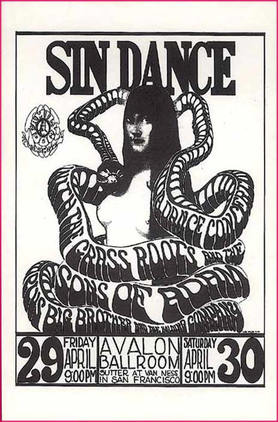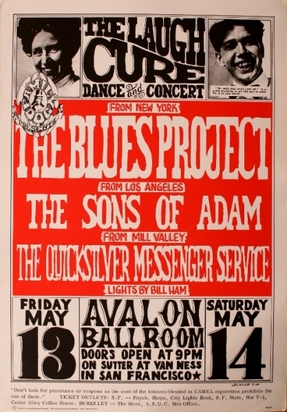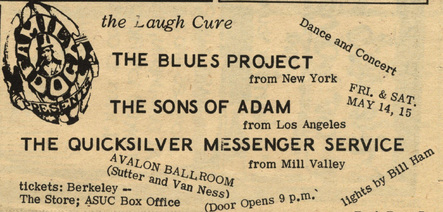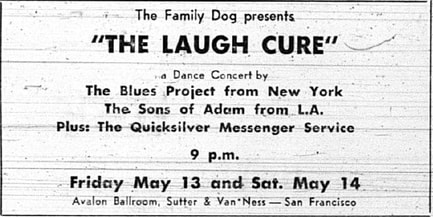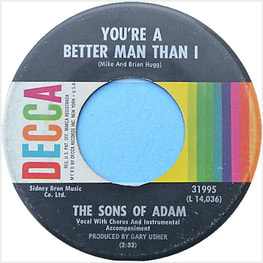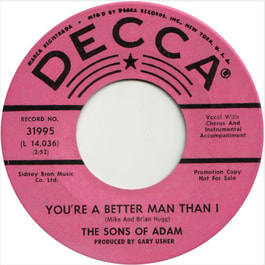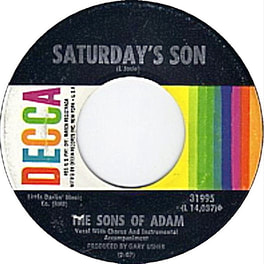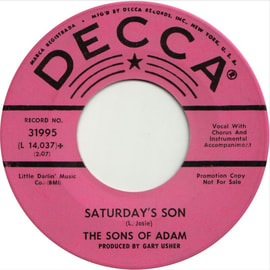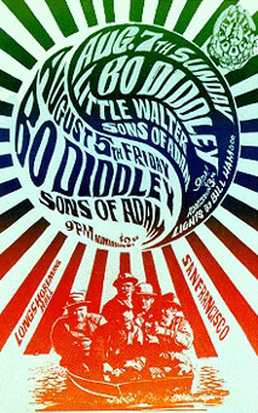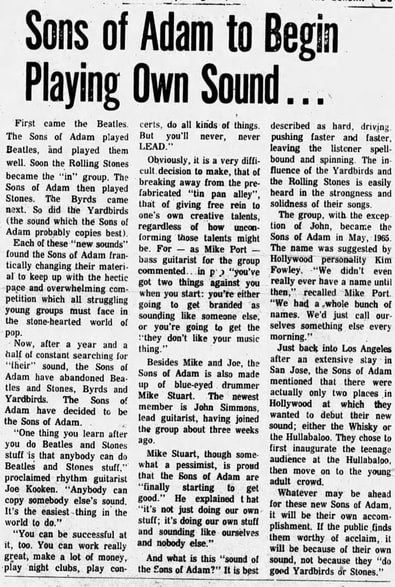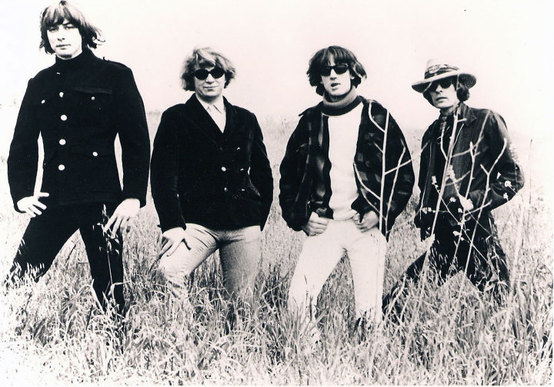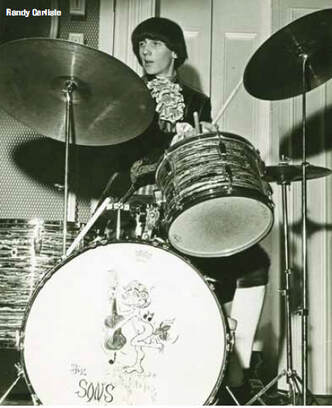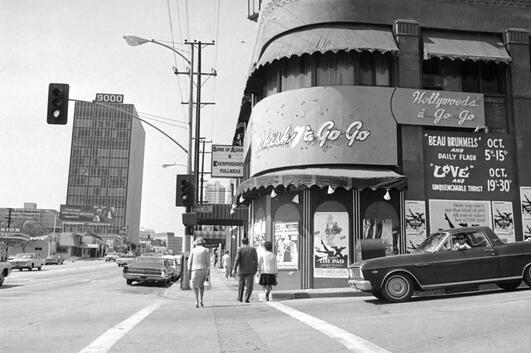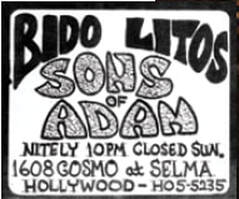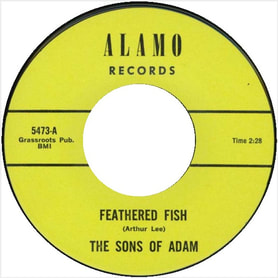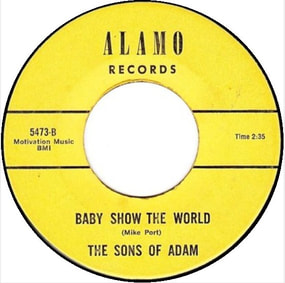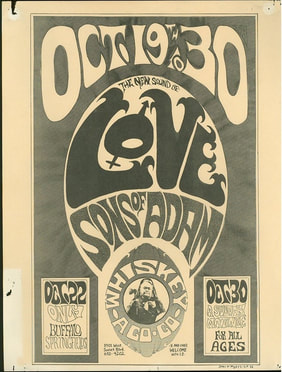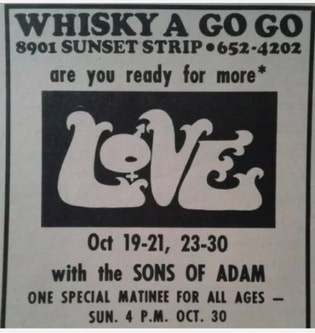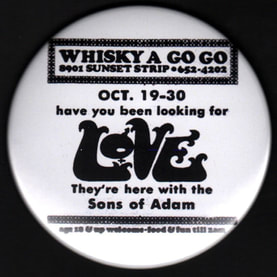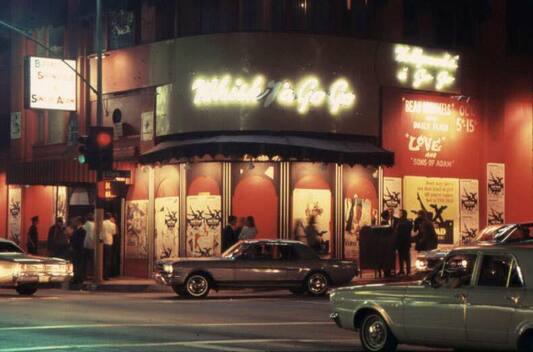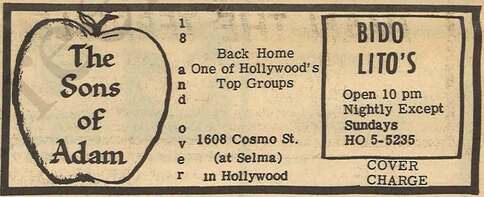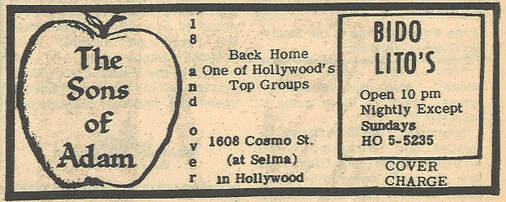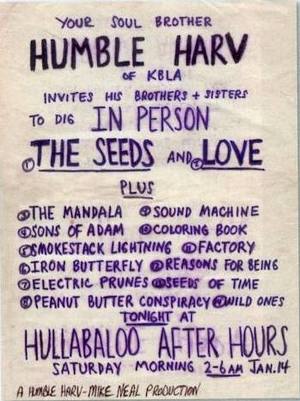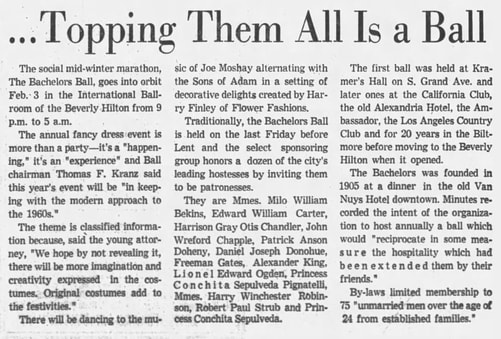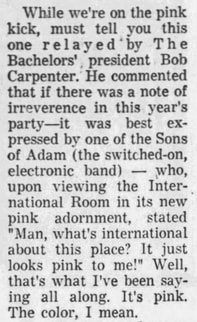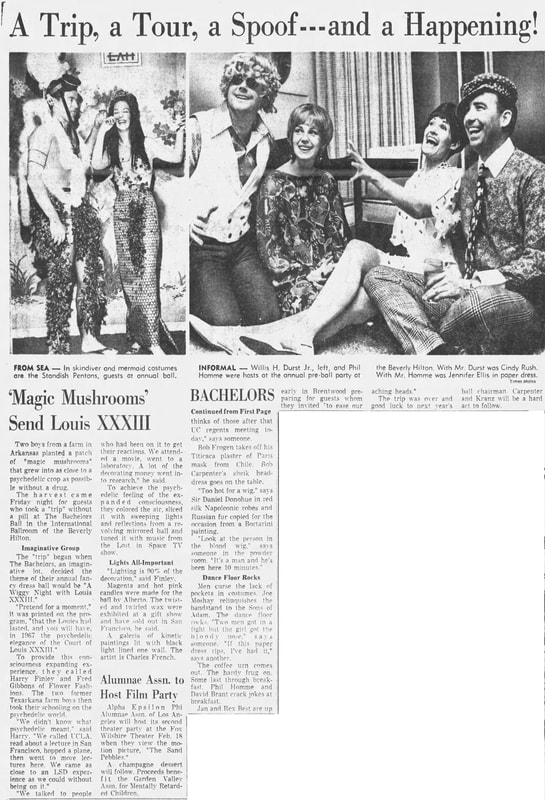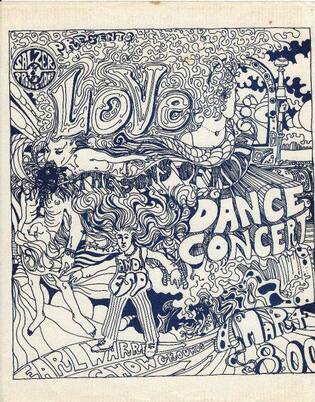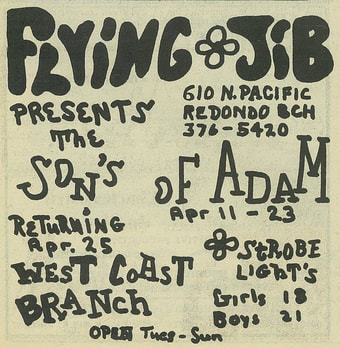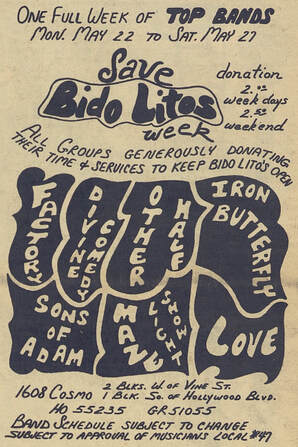If you enjoy what I have put together please consider donating any amount to support and help me to keep this valuable research going. Thanks!!
This day-by-day diary of The Sons Of Adam's live, studio, broadcasting and private activities is the result of three decades of research and interview work by Bruno Ceriotti, but without the significant contributions of other kindred spirits this diary would not have been possible. So, I would like to thank all the people who, in one form or another, contributed to this timeline: Randy Holden, Jac Ttanna (RIP), Michael Stuart-Ware, Craig Tarwater (RIP), Ross Hannan, Corry Arnold, Mike Stax, Alec Palao, Greg Prevost, Steven M. Finger, Erik B. Danam, Johnny Legend, Domenic Priore, Jim Salzer (RIP), Dennis Donley (RIP), Stephen McParland, George Rodriguez, Betty Lou Rothstein, Nancy Carter, Howard Wolf, Barry Wickham, The Daily Californina, Berkeley Barb, The Los Angeles Times, Valley Times, UCLA Daily Bruin, Seattle Daily Times, Ugly Things, Valley News, Los Angeles Free Press, High Moon Records, Citizen News, Anaheim Bulletin, Camarillo Daily News, Thousand Oaks News Chronicle, Los Angeles Herald Examiner.
Summer 1963
An underrated rock band who was a regular fixture on the Los Angeles music scene of the mid-60s, The Sons Of Adam emerged from a surf combo called The Fender IV. The story begins in Baltimore, Maryland, when Randall ‘Randy’ Holden (b. Monday, July 2, 1945, Greensburg, Pennsylvania), a widely regarded lead guitar player who had previously played with a couple of local cover bands called The Montereys and The Iridescents, formed a new group with Joe Kooken (b. Thursday, December 4, 1941, Pottsville, Pennsylvania - d. Monday, August 22, 2022, while he was asleep during the night at his home in Bangkok, Thailand, for food poisoning) on rhythm guitar, the late Michael Vaughn ‘Mike’ Port (b. Thursday, December 14 or Monday, December 18, 1944, Baltimore - d. Monday, September 22, 2014, in the heart of the ghetto in Baltimore, on the street, penniless, in his sleep of a heart attack) on bass, and Sonny Lombardo on drums. “At age 17 Randy Holden was already a better guitar player than most guys ever get,” recalls Joe Kooken about his new bandmate. “But he played surf music!! He liked The Ventures!! I was in Walker’s Music Store one day, and I heard a salesman named Roland (a pretty good guitar player in his own right) talking about Randy. He said, ‘I called him up and asked him what he was doing, and he said he’d learned three Ventures songs that day.’ He said it like it was a bad thing. Poor lame Randy. Wasting his talent on The Ventures. I was stunned. He learned three Ventures songs in one day??? Who was this guy?? I had to meet him. It turned out he lived right around the corner from me. So did Mike Port. I loved The Ventures. So did Mike Port.” Originally, the four kids called themselves the Fendermen. “That was Randy's idea,” adds Kooken. “He reasoned that with that name, we would get a quick sponsorship from Fender when we got to California.”
An underrated rock band who was a regular fixture on the Los Angeles music scene of the mid-60s, The Sons Of Adam emerged from a surf combo called The Fender IV. The story begins in Baltimore, Maryland, when Randall ‘Randy’ Holden (b. Monday, July 2, 1945, Greensburg, Pennsylvania), a widely regarded lead guitar player who had previously played with a couple of local cover bands called The Montereys and The Iridescents, formed a new group with Joe Kooken (b. Thursday, December 4, 1941, Pottsville, Pennsylvania - d. Monday, August 22, 2022, while he was asleep during the night at his home in Bangkok, Thailand, for food poisoning) on rhythm guitar, the late Michael Vaughn ‘Mike’ Port (b. Thursday, December 14 or Monday, December 18, 1944, Baltimore - d. Monday, September 22, 2014, in the heart of the ghetto in Baltimore, on the street, penniless, in his sleep of a heart attack) on bass, and Sonny Lombardo on drums. “At age 17 Randy Holden was already a better guitar player than most guys ever get,” recalls Joe Kooken about his new bandmate. “But he played surf music!! He liked The Ventures!! I was in Walker’s Music Store one day, and I heard a salesman named Roland (a pretty good guitar player in his own right) talking about Randy. He said, ‘I called him up and asked him what he was doing, and he said he’d learned three Ventures songs that day.’ He said it like it was a bad thing. Poor lame Randy. Wasting his talent on The Ventures. I was stunned. He learned three Ventures songs in one day??? Who was this guy?? I had to meet him. It turned out he lived right around the corner from me. So did Mike Port. I loved The Ventures. So did Mike Port.” Originally, the four kids called themselves the Fendermen. “That was Randy's idea,” adds Kooken. “He reasoned that with that name, we would get a quick sponsorship from Fender when we got to California.”
THE FENDERMEN #1 (SUMMER 1963 - NOVEMBER 15, 1963)
1) Randy Holden lead guitar, lead vocals
2) Joe Kooken rhythm guitar, lead vocals
3) Mike Port bass, lead vocals
4) Sonny Lombardo drums
1) Randy Holden lead guitar, lead vocals
2) Joe Kooken rhythm guitar, lead vocals
3) Mike Port bass, lead vocals
4) Sonny Lombardo drums
Sunday, November 16, 1963
“Baltimore was an R&B town. There was no place for us. So, with Randy basically showing us all our parts, we practiced all summer, and, on November 16, 1963, loaded up a ‘59 Volkswagen and headed west,” reminisces Joe Kooken. “The fully loaded Volkswagen had a top speed of about 50 miles an hour, so it took five days to make the trip to Los Angeles.” It was Randy's idea to move the band there in order to play for a more receptive audience. However, they left behind their 15-year-old drummer Sonny Lombardo who was too young to take off on his own and go to Southern California with them.
“Baltimore was an R&B town. There was no place for us. So, with Randy basically showing us all our parts, we practiced all summer, and, on November 16, 1963, loaded up a ‘59 Volkswagen and headed west,” reminisces Joe Kooken. “The fully loaded Volkswagen had a top speed of about 50 miles an hour, so it took five days to make the trip to Los Angeles.” It was Randy's idea to move the band there in order to play for a more receptive audience. However, they left behind their 15-year-old drummer Sonny Lombardo who was too young to take off on his own and go to Southern California with them.
THE FENDERMEN #2 (NOVEMBER 16, 1963 - DECEMBER 1963)
1) Randy Holden
2) Joe Kooken
3) Mike Port
1) Randy Holden
2) Joe Kooken
3) Mike Port
Thursday, November 21, 1963
The Fendermen's bus broke the day they hit town, and by the time they got it fixed and paid a month’s rent for a room, they had only $8.00 left. So, they bought $8.00 worth of canned soup, and went looking for jobs and a new drummer. “When we first hit town, Randy, Mike and I had one room apartment on Orchid Avenue in Hollywood right behind the Chinese Theatre,” reminisces Joe Kooken.
Friday, November 22, 1963
“We woke up on our first day in town to find out that President Kennedy had just been assassinated,” recalls Joe Kooken. “Nothing was ever the same again. That day marks the beginning of the decline in America that continues to this day. Up until then, we had been at the forefront of everything. We made the best cars, the best appliances, the best guitars, the best music, the best movies… the best everything. We were alone on the pinnacle of success. The decline was so gradual that no one even noticed it for a very long time, but it started November 22, 1963.”
Thursday, November 28, 1963
“We had nothing to eat for a week, and starving, literally, before we met Bryland Rice, an aspiring actor, who tooks us to three wealthy, different friends of his, homes for Thanksgiving dinner,” recalls Randy Holden. “I never forgot how Thankful we were for great meals, at three homes in one night. It was amazing.”
December 1963
One day, while they were hangin' around at the Wallichs Music City, a record store located at 1501 Vine Street in downtown Hollywood, the Fendermen met by chance a very good drummer (who had a hot sister, by the way) named Bruce Miller. “Somehow, a conversation came about,” recalls Randy Holden, “we were looking for a drummer, and Bruce was a drummer, so…” “Bruce was a very casual guy, smiled a lot, very sure of himself, and mechanical like a diesel,” he adds. “He didn't play necessarily hard, but dead on, could do all the fills with expertise. The role fit him perfectly, reliable as a diesel, and he had a good heart.” “One of the first things we did [after Bruce joined the band] was go out to the Fender factory [in Fullerton] and play for them,” recalls Joe Kooken. “Basically, just walked into the office and said, ‘We'are the Fendermen. We play all Fender gear, and we're great. Just want you to know.’ Then we played and blew them away. From then on they were there for whatever we needed. I'm just guessing now, but I have a very vague recollection that that's where we found out that there was already a group called the Fendermen. Again just guessing, but it seems likely that not wanting to lose the sponsorship, we thought it would be acceptable to change it to the Fender-Menn IV. I can't think of any other explanation.” By the way, other than a new drummer and a new name, the band also find an Hollywood booking agent, Gail McConkey of McConkey Artists Corporation.
The Fendermen's bus broke the day they hit town, and by the time they got it fixed and paid a month’s rent for a room, they had only $8.00 left. So, they bought $8.00 worth of canned soup, and went looking for jobs and a new drummer. “When we first hit town, Randy, Mike and I had one room apartment on Orchid Avenue in Hollywood right behind the Chinese Theatre,” reminisces Joe Kooken.
Friday, November 22, 1963
“We woke up on our first day in town to find out that President Kennedy had just been assassinated,” recalls Joe Kooken. “Nothing was ever the same again. That day marks the beginning of the decline in America that continues to this day. Up until then, we had been at the forefront of everything. We made the best cars, the best appliances, the best guitars, the best music, the best movies… the best everything. We were alone on the pinnacle of success. The decline was so gradual that no one even noticed it for a very long time, but it started November 22, 1963.”
Thursday, November 28, 1963
“We had nothing to eat for a week, and starving, literally, before we met Bryland Rice, an aspiring actor, who tooks us to three wealthy, different friends of his, homes for Thanksgiving dinner,” recalls Randy Holden. “I never forgot how Thankful we were for great meals, at three homes in one night. It was amazing.”
December 1963
One day, while they were hangin' around at the Wallichs Music City, a record store located at 1501 Vine Street in downtown Hollywood, the Fendermen met by chance a very good drummer (who had a hot sister, by the way) named Bruce Miller. “Somehow, a conversation came about,” recalls Randy Holden, “we were looking for a drummer, and Bruce was a drummer, so…” “Bruce was a very casual guy, smiled a lot, very sure of himself, and mechanical like a diesel,” he adds. “He didn't play necessarily hard, but dead on, could do all the fills with expertise. The role fit him perfectly, reliable as a diesel, and he had a good heart.” “One of the first things we did [after Bruce joined the band] was go out to the Fender factory [in Fullerton] and play for them,” recalls Joe Kooken. “Basically, just walked into the office and said, ‘We'are the Fendermen. We play all Fender gear, and we're great. Just want you to know.’ Then we played and blew them away. From then on they were there for whatever we needed. I'm just guessing now, but I have a very vague recollection that that's where we found out that there was already a group called the Fendermen. Again just guessing, but it seems likely that not wanting to lose the sponsorship, we thought it would be acceptable to change it to the Fender-Menn IV. I can't think of any other explanation.” By the way, other than a new drummer and a new name, the band also find an Hollywood booking agent, Gail McConkey of McConkey Artists Corporation.
THE FENDER-MENN IV #1 (DECEMBER 1963 - APRIL 1964 (?))
1) Randy Holden
2) Joe Kooken
3) Mike Port
4) Bruce Miller drums
1) Randy Holden
2) Joe Kooken
3) Mike Port
4) Bruce Miller drums
December 1963 or January 1964: Roman Terrace, 1708 North Las Palmas Avenue, Hollywood, Los Angeles County, California
The Fender-Menn IV played their debut gig in Los Angeles at the Roman Terrace, a gay bar later known as Camp's Bar. “We only played there for one week, 5 hours a night, 6 nights a week, from Tuesday to Sunday (Mondays were either dark or they used them to showcase other acts),” recalls Joe Kooken. “It was our first gig in L.A, and definitely not our room. They were very nice to us, but they were gay and we weren't. While there, we did meet and backup Troy Walker. That was a trip! One night were told in reverent tones that Troy Walker might be coming in. It was like saying Sinatra might be coming. (Actually, for them it would have been more like Judy Garland). So in the middle of the night a little buzz went through the place, and a few songs later someone came up to the stage and said, ‘Troy likes you. He wants to sing with you.’ Randy just shrugged and said OK. We had never heard of Troy Walker. Up on stage walks this little guy about 5'5" looking like a male version of Judy Garland. Not in drag or anything, but facial structure. He gave us a big smile and said, ‘Four Chords in “F” children.’ Up to that point in my life, I had been playing everything by ear, and had no idea about song structure terms. Fortunately, Randy knew and whispered to me and Mike, ‘F, Dmin, Bb, and C.' Oh… OK… Like The Everly Bros. Got it. Troy counted off a slow vamp and we went through the first progression, and then Troy started singing, ‘For your love… I would do anything.’ His voice was amazing. It was like Tom Jones and the lead singer of the Four Tops all at the same time. We were stunned. The crowd loved it. He tuned out to be a really nice guy who hung around for the rest of the evening and took us out for breakfast in his new Oldsmobile. This was during our first month in Hollywood. We had no money and didn't really know anybody. I went and saw his act with his own band over the years, and he was always really hospitable. It was a great act. He could sing anything. He danced like James Brown, and had no problem making fun of himself. ‘I've got my mother's features, and my father's fixtures.’ I learned a lot about how to be an entertainer by watching Troy.” “We ran into Dick Dale there,” he adds. “He remembered us from Baltimore.” “Mostly we rehearsed at whatever club we were playing at the time,” he continues. “Our amps were always on stage, but we took our guitars home. I think most of our rehearsals were just playing our guitars acoustically in somebody's living room. Usually one or two of us would learn a song at home and then show it to the rest of the band in the afternoon of the gig. They call us a garage band, but we never played one note in a garage. And we never rented a rehearsal space.”
December 1963 or January 1964: Naval Air Weapons Station (NAWS) China Lake, 1 Administrative Circle, Ridgecrest, Kern County, California
“One night was enough, not our favorite gig,” points out Joe Kooken.
January - February 1964: Funky's, Ventura Boulevard, Sherman Oaks, San Fernando Valley, Los Angeles County, California
“I think we only played there about a month,” recalls Joe Kooken. “Interesting place (long gone). Customers included Clint Eastwood, Richard Long, Sue Lyon, and Elvis Presley's bodyguards - Red and Sonny West.” “One of the West cousins, I forgot wich one, heard that Mike Port never lost an arm wrestling contest (which was true) so he challenged Mike to a match,” he adds. “West was a big strong guy, but Mike held him straight up. Neither one could move the other, but they were exerting so much energy and power that they broke the table. That would have cost us a night's pay, but West took the blame, saying he asked for it, and he paid for the table.” “Randy Holden came down with Chicken Pox during that gig,” he continues, “and we had to do three nights without him. Up to that point, I had never played anything but rhythm. I sang folks songs to rock and roll bass and drums for most of each night. Trini Lopez stole my whole act ha ha. We did get some help from [guitarists] Elliot Ingber and Larry Bright. I think Elliot only played one set, one night. I think Larry might have have come by more than once. He was a big help.” “[Then with Randy back] we backed up P.J. Proby for awhile,” he continues. “That was a trip! Proby only knew the words to about three songs. The rest of songs I would stand behind him and sing them a line ahead of time. ‘In a cavern.’ - Proby ‘In a cavern’ - ‘Down by a canyon’ - ‘Down by a canyon’ through the whole song. Mostly Bobby Darin stuff… ‘Mack the Knife’, ‘Beyond the Sea’ all stuff I knew. Proby could really sing, and he was an absolute riot to hang with.” “We also backed up a black guy named Cliff something,” adds Joe. “He did [The Miracles’] ‘Shop Around’ and [James Brown’s] ‘I'll Go Crazy’.” “Funky's is also the place where we met [our managers] Bill Doane and Ozzie Smith,” he concludes. “Bill and Ozzie were a little older than us, and knew their way around. They were ardent surfers and skin divers. They took us out for breakfast and told us we belonged in the beach towns. They set up an audition for us at the Mirage in Santa Monica, and the rest is history.”
Late January 1964
The Fender-Menn IV included in their repertoire most of the songs from the recently released Beatles' second US album, Meet The Beatles! "The first Beatles song I ever heard was I Wanna Hold Your Hand," Joe Kooken recalls. "The song itself, the sound of the voices, the sound of their guitars… No one had ever heard anything like it. We were very sensitive to the competition, and we felt pretty confident that we were a cut above most of it. But this was something completely out of the blue. I bought the album at Wallichs Music City, and we knew right away that this was going to change everything. Up to that point Randy had not wanted to do vocals other than a few Chuck Berry songs (which he did better than anybody), but he actually recognized immediately that this was great stuff. So we spent the next few weeks working up most of the first [sic] album." "When the Beatles hit, we already had long hair so we just combed it forward and added a few Beatles songs to our repertoire," Joe adds. "When the Stones first album came out, we worked it up in a couple of days. We were ahead of the curve on everything. Everything, that is, except making records."
January or February 1964: Mirage, 1325 Santa Monica Boulevard, Santa Monica, Los Angeles County, California
“The first place we played at the beach was the Mirage in Santa Monica,” recalls Joe Kooken. “That club was already going strong before we got there. That's where Bill and Ozzie set up the audition. We started playing there immediately. That was probably Tuesdays and Friday or Saturday… maybe Friday and Saturday.” “We hit the beach towns like the Beatles hit New York,” he adds. “We were instantly the most popular band on the circuit. We played every night to packed houses. Fender gave us gear. We drove nice cars. The chicks loved us. Everybody loved us. It was a beautiful thing.” “As soon as we started playing the beach towns, we got apartments in West LA,” he concludes. “Mike and I lived together, and Randy lived with Norman Pattiz who went on to become the founder of [radio network] Westwood One.”
Sunday, February 9, 1964: Barefoot Room, Cliff House, 15145 Pacific Coast Highway, Pacific Palisades, Westside, Los Angeles County, California
“The Mirage gig led to the gig at the Cliff House,” recalls Joe Kooken. “We played there on Sundays from 6 to 10pm. There was a band stand and a dance floor on the lower level and a dining room and bar with a TV on the level above. When The Beatles made their first appearance on the Ed Sullivan Show [that evening] literally all of America was tuned in. The Cliff House was no exception. We took a break at 8 o'clock and the entire room went upstairs to see the Beatles. After their performance, we went back downstairs and played the same songs. From that moment on everybody started referring us as ‘The Malibu Beatles’. We played a different place every night, and our managers Bill and Ozzie used to tell us that our fans would call around to find out where 'The Beatles’ were playing on any given night We never thought of it as anything other than a term of affection. We never called ourselves that or used that name for anything. If one of the clubs advertised us as that, we may not have even realized it, or just let it go. We never took it seriously. Still, I think more people knew us as ‘The Malibu Beatles’ than ‘The Fender IV’… for a while at least.” “The owner of the club started calling us the Malibu Beatles as a pet name,” confirms Randy Holden. “It wasn't actually our name, ever.” “I agree with Randy,” concludes Joe. “To us the Malibu Beatles was just a joke. If we were advertised as 'The Malibu Beatles', we never knew it.”
Early 1964: Gold Star Studios, 6262 Santa Monica Boulevard, downtown Hollywood, Los Angeles County, California
The Fender-Menn IV recorded a demo produced by their managers Bill Doane and Ozzie Smith. The demo tape included four instrumental songs written by Randy Holden: ‘Everybody Up,’ ‘Malibu Run’ (originally titled ‘Lonely Surf Guitar’), ‘Highway Surfer’ and ‘Little Ollie.’ ‘Malibu Run’ and ‘Everybody Up’ were released as their second single next year, while ‘Highway Surfer’ and ‘Little Ollie’ remained unissued until 1997 when they were released (together with the other two tracks) in Japan on Randy Holden’s CD, ‘Early Works '64-'66 Featuring The Fender IV - Sons Of Adam’ (Captain Trip Records CTCD-056). The CD was re-mastered and re-issue in the US in 2007 as ‘Sons Of Adam - Bytes’ (Guitar God Records). “We put out some very good instrumentals that are still considered underground classics, but nothing went big,” reflects Joe Kooken.
April 1964 (?)
Bruce Miller received his draft notice and had no option than quit the band (he also decoded to get married, and eventually the drums became a lost passion for him). “We really hated to lose him,” recalls Randy Holden. Anyway, the band replaced him with Earl French. “I had a brainstorm remembering a drummer named Earl French back in Baltimore,” adds Randy. “So I phoned him to ask if he wanted to come out and be our new drummer. Earl leapt at the chance. It was a great reunion, as we known each other for several years. He was a natural talent, he could play anything and do it well. He was one of those rare guys who just had soul. He felt music, and it just came out of him. Singing is what he loved most. We bought him a drum kit on credit, somehow we managed that, but Earl was absolutely utter rhythm dynamic, powerful, and a very small guy, but he played those drums so damn good the band was instantly doing what we did like no one else could do. Earl was the magic that pulled it all together, and the audience loved him!”
THE FENDER-MENN IV #2 (APRIL 1964 (?) - MAY 1964 (?))
1) Randy Holden
2) Joe Kooken
3) Mike Port
4) Earl French drums
1) Randy Holden
2) Joe Kooken
3) Mike Port
4) Earl French drums
May 1964 (?)
“Earl French became home sick after a month or so, and longed to go home (he missed his girlfriend),” recalls Randy Holden. “Finally he said he decided he was going back to Baltimore. We pled with him not to go. We were tearing the house down wherever we played. But Earl had something in him that missed home in Baltimore. Its kind of odd but for some reason most of the people who are from Baltimore never leave there, or if they do, they go back. Its really quite strange.” So, Earl left the band and they replaced him with a new one named Keith Kestler. “We met him in a clothing-shoe store selling shoes, and he claimed he could play everything we asked him,” also recalls Randy. “We told him where our next gig was, and to show up. He did, but we were astonished. He couldn't do anything he said he could. He was a he-man kind of character, but quite short, lot of pride, imagined himself as a ladies man, but could not play the drums for love or money. We were getting bookings for small clubs from our agents, but he was killing us. I wanted to fire him on the spot, but then we would have no drums at all. So Keith stayed with us for almost a year, but he never really fit in, because I intensely disliked playing with him because he had no clue what I was doing. He was really pretty good, and a hard worker, but we already looked like the Rolling Stones, while he looked like a model for a chewing gum ad!” “When we were with Bill and Ozzie as our managers, we rehearsed at their beach house just 50 yards north of where the Mastro's Ocean Club restaurant now sits [18412 Pacific Coast Highway in Malibu]. The ocean was right outside the back window,” recalls Joe Kooken. “Keith would be surfing off the point. We would set up our amps, open the window that overlooked the ocean, and play ‘Mar Gaya.’ The surfers would all stop and listen, and Keith would say, ‘That's my band. Gotta go.’ He would paddle in, and we would give the surfers a free concert. Needless to say Keith was very popular down at the beach.” “While at the beach house, I wrote ‘Mar Gaya’,” also recalls Holden. “We played that all day until the band had it down solid. Nor do I ever recall Keith coming in from surfing to play the day I wrote the song. We were all present, though Keith did surf.”
“Earl French became home sick after a month or so, and longed to go home (he missed his girlfriend),” recalls Randy Holden. “Finally he said he decided he was going back to Baltimore. We pled with him not to go. We were tearing the house down wherever we played. But Earl had something in him that missed home in Baltimore. Its kind of odd but for some reason most of the people who are from Baltimore never leave there, or if they do, they go back. Its really quite strange.” So, Earl left the band and they replaced him with a new one named Keith Kestler. “We met him in a clothing-shoe store selling shoes, and he claimed he could play everything we asked him,” also recalls Randy. “We told him where our next gig was, and to show up. He did, but we were astonished. He couldn't do anything he said he could. He was a he-man kind of character, but quite short, lot of pride, imagined himself as a ladies man, but could not play the drums for love or money. We were getting bookings for small clubs from our agents, but he was killing us. I wanted to fire him on the spot, but then we would have no drums at all. So Keith stayed with us for almost a year, but he never really fit in, because I intensely disliked playing with him because he had no clue what I was doing. He was really pretty good, and a hard worker, but we already looked like the Rolling Stones, while he looked like a model for a chewing gum ad!” “When we were with Bill and Ozzie as our managers, we rehearsed at their beach house just 50 yards north of where the Mastro's Ocean Club restaurant now sits [18412 Pacific Coast Highway in Malibu]. The ocean was right outside the back window,” recalls Joe Kooken. “Keith would be surfing off the point. We would set up our amps, open the window that overlooked the ocean, and play ‘Mar Gaya.’ The surfers would all stop and listen, and Keith would say, ‘That's my band. Gotta go.’ He would paddle in, and we would give the surfers a free concert. Needless to say Keith was very popular down at the beach.” “While at the beach house, I wrote ‘Mar Gaya’,” also recalls Holden. “We played that all day until the band had it down solid. Nor do I ever recall Keith coming in from surfing to play the day I wrote the song. We were all present, though Keith did surf.”
THE FENDER-MENN IV #3 (MAY 1964 (?) - SEPTEMBER 1964) / THE FENDER IV #1 (SEPTEMBER 1964 - MARCH 1965)
1) Randy Holden
2) Joe Kooken
3) Mike Port
4) Keith Kestler drums
1) Randy Holden
2) Joe Kooken
3) Mike Port
4) Keith Kestler drums
Friday, May 15, 1964: Little New Yorker, 7311 Beverly Boulevard, Mid-Wilshire, Los Angeles County, California
“I sort of remember a crappy little club that was kind of a drag to play which we used for fill in gigs. I guess that was the Little New Yorker,” recalls Joe Kooken.
Monday, 18, 1964: Little New Yorker, 7311 Beverly Boulevard, Mid-Wilshire, Los Angeles County, California
Friday, May 22, 1964: Little New Yorker, 7311 Beverly Boulevard, Mid-Wilshire, Los Angeles County, California
Monday, May 25, 1964: Little New Yorker, 7311 Beverly Boulevard, Mid-Wilshire, Los Angeles County, California
Friday, May 29, 1964: Little New Yorker, 7311 Beverly Boulevard, Mid-Wilshire, Los Angeles County, California
Monday, June 1, 1964: Little New Yorker, 7311 Beverly Boulevard, Mid-Wilshire, Los Angeles County, California
Friday, June 5, 1964: Little New Yorker, 7311 Beverly Boulevard, Mid-Wilshire, Los Angeles County, California
Monday, June 8, 1964: Little New Yorker, 7311 Beverly Boulevard, Mid-Wilshire, Los Angeles County, California
Friday, June 12, 1964: Little New Yorker, 7311 Beverly Boulevard, Mid-Wilshire, Los Angeles County, California
Monday, June 15, 1964: Little New Yorker, 7311 Beverly Boulevard, Mid-Wilshire, Los Angeles County, California
Sunday, June 14, 1964: Barefoot Room, Cliff House, 15145 Pacific Coast Highway, Pacific Palisades, Westside, Los Angeles County, California
One show, from 6:00pm to 10:00pm. The band was advertised as 'The Malibu Beatles'.
Friday, June 19, 1964: Little New Yorker, 7311 Beverly Boulevard, Mid-Wilshire, Los Angeles County, California
Saturday, June 20, 1964: Beverly Hilton Hotel, 9876 Wilshire Boulevard, Beverly Hills, Los Angeles County, California
“We played a gig at the Beverly Hilton when President Johnson was there,” recalls Joe Kooken, “although our gig had nothing to do with the President. We never even saw him, but I remember waiting in the kitchen before our show, and having the secret service come in and question who we were and why we were there. Don't remember what the event was [it was a fund-raiser].”
Monday, June 22, 1964: Little New Yorker, 7311 Beverly Boulevard, Mid-Wilshire, Los Angeles County, California
Friday, June 26, 1964: Little New Yorker, 7311 Beverly Boulevard, Mid-Wilshire, Los Angeles County, California
Monday, June 29, 1964: Little New Yorker, 7311 Beverly Boulevard, Mid-Wilshire, Los Angeles County, California
Summer 1964: unknown recording studio, in or around Los Angeles, California
In the course of shopping around their 4-songs demo, the band and their managers met a local record producer, Russ Regan, who really liked them and got them a record deal with Imperial Records. At that point the band entered “the recording studio Russ had just built (I think),” recalls Joe Kooken, and they recorded a couple of new songs, an instrumental written by Randy Holden, ‘Mar Gaya,’ plus their first vocal number, ‘You Better Tell Me Now,’ co-written by Holden and Joe Kooken. “We cut ‘Mar Gaya’ that immediately became a top prioriy because we all thought, even Russ, that was the hit,” also recalls Kooken. Both songs, produced by Doane & Smith, were released shortly thereafter as their debut single and later, in 1997, were also included in the aforementioned Holden’s CD, ‘Early Works '64-'66 Featuring The Fender IV - Sons Of Adam.’
Friday, July 3, 1964: Little New Yorker, 7311 Beverly Boulevard, Mid-Wilshire, Los Angeles County, California
Monday, July 6, 1964: Little New Yorker, 7311 Beverly Boulevard, Mid-Wilshire, Los Angeles County, California
Friday, July 10, 1964: Little New Yorker, 7311 Beverly Boulevard, Mid-Wilshire, Los Angeles County, California
Monday, July 13, 1964: Little New Yorker, 7311 Beverly Boulevard, Mid-Wilshire, Los Angeles County, California
Friday, July 17, 1964: Little New Yorker, 7311 Beverly Boulevard, Mid-Wilshire, Los Angeles County, California
Monday, July 20, 1964: Little New Yorker, 7311 Beverly Boulevard, Mid-Wilshire, Los Angeles County, California
Friday, July 24, 1964: Little New Yorker, 7311 Beverly Boulevard, Mid-Wilshire, Los Angeles County, California
Monday, July 27, 1964: Little New Yorker, 7311 Beverly Boulevard, Mid-Wilshire, Los Angeles County, California
Friday, July 31, 1964: Little New Yorker, 7311 Beverly Boulevard, Mid-Wilshire, Los Angeles County, California
The band was advertised as ‘Fender Menn IV (Formerly The Malibu Beatles)’.
Monday, August 3, 1964: Little New Yorker, 7311 Beverly Boulevard, Mid-Wilshire, Los Angeles County, California
The band was advertised as ‘Fender Menn IV (Formerly The Malibu Beatles)’.
Friday, August 7, 1964: Little New Yorker, 7311 Beverly Boulevard, Mid-Wilshire, Los Angeles County, California
Monday, August 10, 1964: Little New Yorker, 7311 Beverly Boulevard, Mid-Wilshire, Los Angeles County, California
Friday, August 14, 1964: Little New Yorker, 7311 Beverly Boulevard, Mid-Wilshire, Los Angeles County, California
Monday, August 17, 1964: Little New Yorker, 7311 Beverly Boulevard, Mid-Wilshire, Los Angeles County, California
Friday, August 21, 1964: Little New Yorker, 7311 Beverly Boulevard, Mid-Wilshire, Los Angeles County, California
Monday, August 24, 1964: Little New Yorker, 7311 Beverly Boulevard, Mid-Wilshire, Los Angeles County, California
Friday, August 28 - Saturday, August 29 and Tuesday, September, 1, 1964: 'Grand Opening!', Mirage, 4706 Van Nuys Boulevard at Ventura Freeway, Sherman Oaks, San Fernando Valley, Los Angeles County, California
The band was advertised as ‘Fender Menn IV (Malibu Beatles)’. “That's the club where Dewey Martin saw us,” recalls Joe Kooken. “After they both were open, we split the Mirages to Tuesdays and Fridays in Santa Monica and Thursdays and Saturdays in the valley. Maybe the other way around… definitely two nights in each place.”
September 1964
The Fender-Menn IV shortened their name to The Fender IV, and released only in the US their debut single, 'Mar Gaya / You Better Tell Me Now' (Imperial 66061). “We got some airplay from [KRLA's disc jockey] 'Emperor' Bob Hudson, but it just didn't sell,” reflects Joe Kooken.
Friday, October 30, 1964 (?): 'The Drop In', Hawthorne Recreation Center, Hawthorne Memorial Park, 3901 West El Segundo Boulevard, Hawthorne, Los Angeles County, California
The Fender IV played here almost every Friday for months, during the 'Drop-In' dances hosted by famous deejay and voice actor Casey Kasem. At those gigs they would play their own sets and sometimes back up guest artists. Supposedly tonight they backed up the headliner Dick and Dee Dee, and after the show the duo asked them if they wanted to back them up for an upcomig gig at the Long Beach Arena as supporter for the Rolling Stones. Nedless to say, they accepted!
Sunday, November 1, 1964: Long Beach Arena, 300 East Ocean Boulevard, Long Beach, Los Angeles County, California
The Fender IV backed (unbilled and probably unpaid too) Dick and Dee Dee when they played third on the bill during an afternoon gig with the Rolling Stones, during the latter's 2nd American tour. “At the Stones concert, they went on right after us,” recalls Randy Holden. “The agreement with Dick and Dee Dee was, we'd back them on their 2 hit songs, then we could play a half dozen of our own songs.” Also on the bill: Jimmy Clanton, the Spats, the Vibrants, the Soul Brothers.
1964: 'The Drop In', Darby Park Recreation Center, 3400 West Arbor Vitae Street, Inglewood, Los Angeles County, California
The Fender IV played here almost every Friday for months, during the 'Drop-In' dances hosted by famous deejay and voice actor Casey Kasem. At those gigs they would play their own sets and sometimes back up guest artists.
1964: Retail Clerk’s Hall, 8550 Stanton Avenue, Buena Park, Orange County, California
1964 - 1965: 23 Skidoo, 2116 Westwood Boulevard, West Los Angeles, Los Angeles County, California
The Fender IV played here every Wednesday for months. “The 23 Skidoo was great,” recalls Joe Kooken. “It was right on the UCLA campus in Westwood. Girls everywhere. And they showed Road Runner cartoons on our breaks ha ha.”
January 1965: Mirage, 4706 Van Nuys Boulevard at Ventura Freeway, Sherman Oaks, San Fernando Valley, Los Angeles County, California
A singer named Sir Walter Raleigh (aka Dewey Martin, future Buffalo Springfield's drummer) saw the Fender IV played at the Mirage one night during this month, and after the show he offered them a month tour as his backing band under the name of Sir Raleigh and the Cupons. They accepted and about a week later Dewey send them the records of the songs he wanted them to learn that he was going to sing on that tour exactly.
January 1965: Mirage, 1325 Santa Monica Boulevard, Santa Monica, Los Angeles County, California
Their future drummer Michael Stuart was in the audience tonight, and there he met by chance Donna Port, Mike's wife, and after she find out that Michael was a drummer (he played with a frat band called the Vectors at that time), she told him that the band was unhappy with their current drummer Keith Kesler for his lack of drumming skills, so she suggested that could be a good moment for him to offered his service if he wanted. Michael liked the band so he accepted to met the band after the show and asked to try out for them exactly.
January 1965
The very next day of the aforementioned gig, Randy Holden and Mike Port jammed with Michael Stuart at his parents home in Ladera Heights, a very quiet, upscale suburban L.A.'s neighbourhood. After running through a few tunes, they sat around and talked for a while. Then, in a minute, Randy looked up and told Michael that they want him as their new drummer and Michael said yes! “He wanted to play with us more than anything,” recalls Randy Holden. “We auditioned him at his parents home. He was good, and we hired him.” However, Michael will joined them only in a couple of months after they will returned in LA after the tour with Sir Walter Raleigh.
Saturday, January 30, 1965: Seattle Center Coliseum, 305 Harrison Street, Seattle, King County, Washington
“We drove from LA to Seattle, to play a show at the Coliseum with the Beach Boys as headliners,” recalls Randy Holden about Sir Raleigh and the Cupons’ first date of the tour. “We backed Dewey on a local hit song he had ‘The White Cliffs of Dover’. After playing Dewey's song, we played a 45 minute set of our songs.” During their set, the Cupons did three songs on their own, and then Dewey came on stage and sat in on drums for another three songs. When the Cupons first took the stage there was another set of drums on stage. They thought it was for the next act or something. They didn't really pay any attention to it. Then, about halfway through their second song the crowd started really going crazy, and the groove got way better. They looked around and there was Dewey on the drums with this big grin on his face. They didn't even know he played drums. He only played during their songs. He came out front for his songs, and he never played drums again on the entire tour. He was always out front. By the way, beside the Beach Boys who were the headliner, the other support acts were: Jan & Dean, the Viceroys, the Sonics, the Astronauts, Terry Black, the Dynamics. One show, started at 8:00pm.
Monday, February 8 - Saturday, 27, 1965: A-Go-Go, 101 Eastlake Avenue E, downtown Seattle, King County, Washington
Sir Raleigh and the Cupons' gigs.
February 1965: 'unknown title', TV Show, Seattle, King County, Washington
Sir Raleigh and the Cupons appeared on a local television show lip-syncing their debut single ‘White Cliffs Of Dover,’ which was a hit in Seattle at that time. After the peformance the band was also interviewed by the show host. By the way, ‘White Cliffs Of Dover,’ released in November 1964, was actually recorded by an old lineup of the Cupons, so the the Fender IV actually did not play on it.
Early - Late March 1965: Red Dog Saloon, 278 South Franklin Street, Juneau, Alaska
“Dewey came up with a 3 week gig in Juneau so we flew up there to play,” recalls Randy Holden. “It was 7 hours a night, 9pm to 4am. Eskimo families, with kids, grandparents made up the audience.” “I remember Alaska was very beautiful, I considered moving there," he adds. “It was incredibly expensive. Fur Coats made of Wolf were popular, but $700 that was 1965. Probably $10,000 now. They were beautiful. Went to see Mendenhall Glacier, the blue color of it was spectacular. One of the promoters of the show shot a Moose walking down the street, and brought us to his home for Moose steak dinner and wow it was fabulous. We were invited to a King Crab Feast, but I had the flu and couldn’t go. Mike and Joe went and said the King Crab was 12’ spread out taking up the entire table. Boy did I miss out. I recall walking from hotel to the club in three foot deep snow, in the middle of a blizzard, having on only a sport coat, carrying my guitar on my head, and it was remarkably not cold at all. I went to the Red Dog Saloon one evening, all dressed up ready for the gig. I ordered liver and onions. I was reading a local paper and put my fork on my plate, and flipped the entire dinner right into my lap. What a mess!” As aforementioned by Randy, the band were booked to play at the Red Dog Saloon for three weeks but their residency there abruptly ended after the second week, after a sort of “diplomatic incident” between Dewey Martin and the club owner. “While sitting in the club one morning,” also recalls Randy, “out the window we saw Dewey running down the street, fast as he could, from a Chinese guy with scissors chasing him. Seems Dewey was drunk and insulted the guy, who was also the club owner. Dewey hid out, and the guys who promoted the show had to sneak us out of town to the airport. We went back to Seattle and drove home to L.A.” “I never did learn what [exactly] Dewey did,” he concludes, “but knowing him, it wouldn't take a lot of imagination to figure what he'd done, probably had to do with the guy’s wife. Dewey was always drunk and flirting with a guy’s wife is insulting. He flirted with Mike’s wife, he flirted with anyone wearing a skirt. It was ironic, landing at the airport it was like we were the Beatles, crowd of people flashing cameras, and our photos coming down stairway of plane was Front Page News, only to be spirited secretly out of town two weeks later, as a result of Dewey’s foibles. That was pretty funny.”
March 1965: unknown recording studio, Juneau (?), Alaska
Sir Raleigh and the Cupons recorded some songs while up there in Alaska, including ‘Tomorrow's Gonna Be Another Day,’ an original number written by Tommy Boyce and Steve Venet and later also recorded by The Monkees, plus The Beatles’ ‘Things We Said Today.’ ‘Tomorrow's Gonna Be Another Day’ was later released only in the US in June 1965 as side-A of Sir Raleigh and the Cupons’ second single, ‘Tomorrow's Gonna Be Another Day / Whitcomb Street’ (Jerden 760), while ‘Things We Said Today’ was later released only in the US in 1966 on the Various Artists compilation, ‘The Hitmakers’ (Jerden JRL-7005).
March 1965
The Fender IV's second and last single, ‘Malibu Run / Everybody Up’ (Imperial 66098), was released only in the US. The single sold poorly and “Emperor Hudson wouldn't even play it because he was pissed at Russ Regan who had talked him into financing the recording studio he had just built, and Hudson had lost a lot of money,” regrets Joe Kooken.
Late March or Early April 1965
Sir Raleigh and the Cupons returned to Los Angeles when the tour ended. Sir Walter Raleigh tried to talk the Fender IV into leaving Randy Holden, and continuing with him as Sir Raleigh and the Cupons. Keith Kestler was the only one who wanted to do it. He lobbied Joe Kooken very hard to make that change. He knew Randy intensely disliked playing with him and, by this time, he wasn't very fond of Randy. So it was the perfect solution for him. And there was a lot of money involved. Joe never gave it a serious thought, but Keith tried very hard to get him to make that move.
Early April 1965
Keith Kestler was fired and Michael Stuart (b. Paul Michael Stuart-Ware, Saturday, July 29, 1944, Texarkana, Arkansas) finally and officialy joined The Sons Of Adam. “Stuart was great,” recalls Joe Kooken. “With him we were now a very solid unit, but we had gone as far as we could go in the beach towns. To make the next jump, we knew we had to hit Hollywood.” “In those days we rehearsed at our girlfriends house, or, when Michael Stuart joined, at his parents house a few times until he was up to speed,” he adds. “[Then] when Randy and Mike got married, Stuart and I shared a house in the Pacific Palisades with one of our fans who needed roommates.”
THE FENDER IV #2 (EARLY APRIL 1965 - MAY 1965) / THE SONS OF ADAM #1 (MAY 1965 - AUGUST 7, 1966)
1) Randy Holden
2) Joe Kooken
3) Mike Port
4) Michael Stuart drums
|
|
Tuesday, April 6: 23 Skidoo, 2116 Westwood Boulevard, West Los Angeles, Los Angeles County, California
Thursday, April 8: 23 Skidoo, 2116 Westwood Boulevard, West Los Angeles, Los Angeles County, California
Friday, April 9 or 16 or 23 or 30, 1965: 'The Drop In', Hawthorne Recreation Center, Hawthorne Memorial Park, 3901 West El Segundo Boulevard, Hawthorne, Los Angeles County, California
The Fender IV backed up the famous soul singer Brenda Holloway tonight.
Monday, April 12 and Wednesday, April 14 - Sunday, April 18 and Monday, April 19 and Wednesday, April 21 - Sunday, April 25, 1965: Warehouse IX, 2214 Stoner Avenue, West Los Angeles, Los Angeles County, California
Also on the bill: Jet Set, Sinners, U.S. Males, Carpet Baggers. “The manager of the 23 Skidoo opened the Warehouse IX at one point, and we played there from time to time,” recalls Joe Kooken.
Tuesday, April 20: 23 Skidoo, 2116 Westwood Boulevard, West Los Angeles, Los Angeles County, California
Thursday, April 22: 23 Skidoo, 2116 Westwood Boulevard, West Los Angeles, Los Angeles County, California
Thursday, May 6 or 13 or 20, 1965: Beaver Inn, Pico Boulevard, Westwood, Los Angeles County, California
“Our managers [Bill Doane and Ozzie Smith] opened the Beaver Inn and we played there only once a week for awhile,” recalls Joe Kooken. “Both of those clubs [Warehouse IX and Beaver Inn] were built for the express purpose of having us play there and fill them with beer drinking customers.” “We rehearsed there too,” he adds. “One night, while we played there, we got word that [the great late local record producer] Kim Fowley was coming down to check us out,” recalls Randy Holden, “and he would be bringing some friends with him. We don't know who he was, but we left his name at the door. The next night Fowley walked in and at the break, he met us over by the edge of the stage and introduced himself and told us he liked the group and he thought he could get us some work in Hollywood. Then he said The Fender IV was a dog shit name and he suggested 'The Sons Of Adam' as new name for the band. And then he left.”
Tuesday, May 18 - Sunday, May 23, 1965: Gazzarri's, 319 North La Cienega Boulevard, West Hollywood, Los Angeles County, California
Supposedly starting this week, The Sons Of Adam played here as house band from Tuesday to Sunday. “At the time, there were really only two places to play in Hollywood: The Whiskey à Go Go, and Gazzarri’s,” recalls Joe Kooken. “As luck would have it, the Walker Bros. had just completed a residency at Gazzarri’s, and had left to try their luck in England. I asked Bill Gazzarri if we could come in on a Sunday afternoon, and play for free. We did and he hired us on the spot, and, just like that, we were playing Hollywood five hours a night - six nights a week. We packed the place every night [and singer] Bobby Sherman used to come and sit in with us all the time [there].” “When we were playing Gazzarri's, we [Stuart and I] moved to an apartment just off Robertson Boulevard,” he adds.
Tuesday, May 25 - Sunday, May 30, 1965: Gazzarri's, 319 North La Cienega Boulevard, West Hollywood, Los Angeles County, California
June 1965 (?): Nashville West Recording Studios Inc., 5505 Melrose Avenue, West Hollywood, Los Angeles County, California
The Sons Of Adam backed up the late jazz singer, songwriter, pianist, and guitarist Bulee ‘Slim’ Gaillard, in a couple of songs, including a new version of ‘Cement Mixer (Put-Ti-Put-Ti),’ an old Gaillard's novelty hit that he had back in 1945! Originally done to a “boom-chink” beat, the Sons laid down a real hard core rock 'n' roll foundation and Slim sang the song in a rock 'n' roll style. The band got paid for the session, and never heard anything more about it. They don't even know if this tunes came out as single, but, if it did, they don't think their name would be on the record. By the way, Slim Gaillard lip-synched this new version of ‘Cement Mixer (Put-Ti-Put-Ti)’ on a episode of the popular Los Angeles-based television show Shivaree aired on Saturday, July 31, on KABC-TV.
1965
Ever since the Long Beach gig with the Rolling Stones, the late Dick St. John (of Dick and Dee Dee) had been in on-and-off negotiations with Randy Holden to managed and produced the Sons Of Adam, especially now that the band, apparently disenchanted that the deal with Imperial Records didn't take them further, had by this time broken off ties with their managers Bill Doane and Ozzie Smith. Dick and his partner Mike Post had been doing some preliminary recordings of the band over in the garage studio Dick and Dee Dee used to record their stuff, and the group had been doing some hanging out over at Dick's house in Santa Monica, the one he shared with his mother. Problem was, like a lot of the people who had designs on the future of the group, Dick and Mike kept trying to turn the group into something they weren't, something they knew they could never be. Dick even overdubbed his voice onto one of the demo cuts the group did over at Dick's garage studio in Santa Monica. Dick saw the Sons Of Adam as a way to shoehorn himself into the new rock scene that was taking over popular music. It finally got to the point where Dick and Mike didn't want to invest any more time or money into the group without them signing a contract. Dick had mentioned a few times that he expected them to sign one pretty soon; so one night Randy called Dick up on the phone and gave him the bad news that they weren't interested. Dick was real upset about it. He was yelling and screaming that they had wasted his time.
1965
The great late film director Sydney Pollack saw the Sons Of Adam one night and decided to cast them as the club band that would appear in a black and white movie he was about to begin, The Slender Thread, starring Anne Bancroft and Sydney Poitier. They shot their part on an enormous sound stage (section 'C') at the Paramount Picture Studios, 5555 Melrose Avenue, downtown Hollywood. Sydney Poitier wasn't scheduled to appear in their scene, therefore they didn't see him at all during the two or three days they were on the set, but Anne Bancroft was there the whole time. They didn't actually play when they were filming. The group had gone into the Gold Star Studios and recorded the sound track (pressed on acetate that was in possession of Michael Stuart for years before he threw it away!) a few days before their scene was shot, so all the extras were dancing and gettin' down to a record, while they pretended to be playing, because it was supposed to be a real smoky nightclub. They even got billing in the closing credits for this film, even if actually other people's music was dubbed in (kind of insulting it was, because what they recorded was much better than the squeeky-clean crap they substituted!!).
Tuesday, June 1 - Sunday, June 6, 1965: Gazzarri's, 319 North La Cienega Boulevard, West Hollywood, Los Angeles County, California
Tuesday, June 8 - Sunday, June 13, 1965: Gazzarri's, 319 North La Cienega Boulevard, West Hollywood, Los Angeles County, California
Tuesday, June 15 - Sunday, June 20, 1965: Gazzarri's, 319 North La Cienega Boulevard, West Hollywood, Los Angeles County, California
Tuesday, June 22 - Sunday, June 27, 1965: Gazzarri's, 319 North La Cienega Boulevard, West Hollywood, Los Angeles County, California
Tuesday, June 29 - Sunday, July 4, 1965: Gazzarri's, 319 North La Cienega Boulevard, West Hollywood, Los Angeles County, California
Tuesday, July 6 - Sunday, July 11, 1965: Gazzarri's, 319 North La Cienega Boulevard, West Hollywood, Los Angeles County, California
Tuesday, July 13 - Sunday, July 18, 1965: Gazzarri's, 319 North La Cienega Boulevard, West Hollywood, Los Angeles County, California
Tuesday, July 20 - Sunday, July 25, 1965: Gazzarri's, 319 North La Cienega Boulevard, West Hollywood, Los Angeles County, California
Tuesday, July 27 - Sunday, August 1, 1965: Gazzarri's, 319 North La Cienega Boulevard, West Hollywood, Los Angeles County, California
Tuesday, August 3 - Friday, August 6, 1965: Gazzarri's, 319 North La Cienega Boulevard, West Hollywood, Los Angeles County, California
Saturday, August 7, 1965: Gazzarri's Hollywood A Go Go, 9039 Sunset Boulevard, West Hollywood, Los Angeles County, California
|
|
Sunday, August 8, 1965: Gazzarri's, 319 North La Cienega Boulevard, West Hollywood, Los Angeles County, California
Tuesday, August 10 - Sunday, August 15, 1965: Gazzarri's, 319 North La Cienega Boulevard, West Hollywood, Los Angeles County, California
Tuesday, August 17 - Sunday, August 22, 1965: Gazzarri's, 319 North La Cienega Boulevard, West Hollywood, Los Angeles County, California
Tuesday, August 24 - Sunday, August 29, 1965: Gazzarri's, 319 North La Cienega Boulevard, West Hollywood, Los Angeles County, California
Tuesday, August 31 - Sunday, September 5, 1965: Gazzarri's, 319 North La Cienega Boulevard, West Hollywood, Los Angeles County, California
Tuesday, September 7 - Sunday, September 12, 1965: Gazzarri's, 319 North La Cienega Boulevard, West Hollywood, Los Angeles County, California
Tuesday, September 14 - Sunday, September 19, 1965: Gazzarri's, 319 North La Cienega Boulevard, West Hollywood, Los Angeles County, California
Tuesday, September 21 - Sunday, September 26, 1965: Gazzarri's, 319 North La Cienega Boulevard, West Hollywood, Los Angeles County, California
Tuesday, September 28 - Sunday, October 3, 1965: Gazzarri's, 319 North La Cienega Boulevard, West Hollywood, Los Angeles County, California
Tuesday, October 5 - Sunday, October 10, 1965: Gazzarri's, 319 North La Cienega Boulevard, West Hollywood, Los Angeles County, California
Tuesday, October 12 - Sunday, October 17, 1965: Gazzarri's, 319 North La Cienega Boulevard, West Hollywood, Los Angeles County, California
October ??, 1965: Columbia Studios, CBS Columbia Square, 6121 Sunset Boulevard, Hollywood, Los Angeles County, California
Through their friend Bobby Sherman, the Sons Of Adam met their new manager, Dick Martinek, a competent and well-connected manager who was also handling the Surfaris at that time. The popular surf band, mostly known for their 1963's smash hit Wipe Out, was under contract with Decca Records and was working with the label's staff producer Gary Usher, “a very talented producer and a really nice guy,” recalls Joe Kooken. So, Martinek persuaded Usher to come and see the Sons during one of their live performances, and the producer was impressed enough to bring them in studio for an audition, which eventually resulted in them signing a six-month contract with Decca. So, in mid-October 1965, the Sons, with Usher as producer, recorded their debut single, ‘Take My Hand / Tomorrow's Gonna Be Another Day.’ The A-side was an original written by Randy Holden and Joe Kooken, and where, according to Usher, Chuck Girard of The Hondells was brought in to bolster the high end of the group's harmonies, while the producer rattled the tambourine. “Michael Stuart sang the harmony below me on ‘Take My Hand’,” recalls Joe Kooken. “He was a great singer, terrific. In those days of lousy PA's and no monitors, the underneath notes were the hardest ones to hit on pitch because it was so hard to hear your own voice. When you see singers put their hands up to their ears, that's so they can hear their own voice. The top notes are easier to hit because they are easier to hear. Michael played drums so he couldn't put his hands up to his ears, but he hit those middle, and low notes right on the money… every time. That was a real extra added bonus to his already dead on drum playing.” “When we recorded ‘Take My Hand’ I sang the lead vocal by myself,” adds Joe, “and then we all overdubbed the harmonies. The guy from the Hondells might have sung with us just to add another voice, but Mike Port, Michael Stuart and I sang that song every night. We had no trouble hitting those notes.” On the flipside there was a new version of the song they'd cut earlier that year with Sir Raleigh.
Tuesday, October 19 - Sunday, October 24, 1965: Gazzarri's, 319 North La Cienega Boulevard, West Hollywood, Los Angeles County, California
Tuesday, October 26 - Sunday, October 31, 1965: Gazzarri's, 319 North La Cienega Boulevard, West Hollywood, Los Angeles County, California
Tuesday, November 2 - Sunday, November 7, 1965: Gazzarri's, 319 North La Cienega Boulevard, West Hollywood, Los Angeles County, California
Late 1965 (?)
Apparently the Sons Of Adam came close to scoring a regular slot on Shindig!, a national television musical variety series which was filmed in Los Angeles and aired on ABC network once a week from September 16, 1964 to January 8, 1966. “Bobby Sherman took us down with the idea that we would be regulars on the show every week in place of the Righteous Brothers,” recalls Joe Kooken. “I don't remember why they were leaving, I just know we were supposed to replace them. Everything was all set, and then the show got canceled. There were a few weeks worth of big name guests already booked past the date of the last show. So they just moved them into the last few tapings and there was no room for us. If that would have happened, this would be an entirely different story.”
Monday, December 6, 1965: 'Hollywood Discotheque', KCOP-TV (Channel 13), KCOP Television Studios, 915 North La Brea Avenue, West Hollywood, Los Angeles County, California (broadcast date)
The Sons Of Adam's first and only television appearance was when they did a cover of The Yardbirds' Mr. You're a Better Man Than I, on this short-lived local musical variety series hosted by KRLA deejay Johnny Hayes, and aired (live?) in color every Monday from 8:30pm to 9:30pm. Also appeared on this episode: Dave Berry, Chubby Checker, Glenn Ford's son Peter, The Dillards. “We filmed the show, but afterward our manager [Dick Martinek] said we had to sign the checks to kickback the Union pay,” recalls Randy Holden. “Under protest we signed them, then went to the Union to lodge a complaint. We were slated to be the Monkees, but were X’d our because of our complaint. Just as well, would not have wanted to be a cartoon act.”
Wednesday, December 15, 1965
The Sons Of Adam were invited to the Los Angeles premiere of The Slender Thread movie.
December 1965
The Sons Of Adam's debut single, ‘Take My Hand / Tomorrow's Gonna Be Another Day’ (Decca 31887), was released in the US. The single, which was also released in Canada (1966) and Japan (May 1966), tanked tanked after receiving little or no promotion from Decca, who were sinking most of their advertising budget into the Who at the time. “Decca gave it no promotion,” confirms Joe Kooken, “and it never got played on the air. Listening to it today, it really sounds a lot like what was on the radio at the time, but it didn’t really show the power and dynamics that the band had live. If we would have left Decca then this might be a very different story. But we were talked into giving it one more try.” By the way, both songs later appeared on the band's EP, ‘Sons Of Adam’ (Moxie M 1032), released only in the US in 1980, and then only in Japan in 1997 in the Randy Holden's CD, ‘Early Works '64-'66 Featuring The Fender IV - Sons Of Adam’ (Captain Trip Records CTCD-056).
Late 1965 or Early 1966: unknown recording studio, in or around Los Angeles, California
The Sons Of Adam recorded two originals written by Randy Holden and Joe Kooken: 'Without Love' and 'I Told You Once Before', plus a cover of The Zombies, 'You Make Me Feel Good', written by the band's bassist Chris White. All these three songs were later released in 1997, in Japan, on the Randy Holden's CD, 'Early Works '64-'66 Featuring The Fender IV - Sons Of Adam' (Captain Trip Records CTCD-056).
Monday, January 24, 1966: The Action, 8265 West Santa Monica Boulevard, West Hollywood, Los Angeles County, California
Supposedly the first of several Monday nights that the Sons of Adam would played at the Action, although no other dates are confirmed.
January - March 1966: Cinnamon Cinder, 11345 Ventura Boulevard, Studio City, San Fernando Valley, Los Angeles, Los Angeles County, California
The Sons Of Adam played here as house band for a couple of months. Every Wednesday at the Cinnamon Cinder was a 'guest star' night, and they would serve as backup band for whatever star showed up. Glen Campbell was the guest star one night. Dick and Dee Dee was also the 'Wednesday guest star' during the band's final week at the club.
Early 1966: Carolina West Century Lounge (aka Century Theatre), 5601 West Century Boulevard, Westchester, Los Angeles, Califormia
Their manager Dick Martinek booked the Sons Of Adam into this infamous strip club located near the Los Angeles International Airport. “He had been told not to ever book us in any kind of a bowling alley topless bar loser dump ever,” recalls Michael Stuart, “but he went right ahead and booked us for that exact kind of gig anyway.” Nedless to say, the band fired Martinek soon after.
Early 1966 (?)
One night, after walking out of Eatin' Affair, a small restaurant across the street from the Whisky à Go Go, at 8958 Sunset Boulevard, West Hollywood, Michael Stuart and Mike Port were approached by a couple of guys that stopped them and asked them if they would like to do an ad for Leslie Speakers Corporation, for fifty bucks a piece for a couple hours work the next morning, over in Palos Verdes, California. They accepted the offer and the next morning they all met over in Palos Verdes near a field of yellow flowers, and Michael and Mike and two other guys they never met before, posed for some pictures, collected fifty bucks and then went home. A few months later Michael Stuart saw the ads in Wallichs Music City, on posters and cardboard supports with pamplets. In these ads the four guys were presented as a real rock band (but they weren't!) called Beasts of the Field (a phrase taken from the Holy Bible!).
Thursday, March 10 or Friday, March 11, 1966: Bido Lito’s, 1608 North Cosmo Street, downtown Hollywood, Los Angeles County, California
Love played at the Bido Lito's on March 10-11 and, according to Michael Stuart, the Sons Of Adam played an unbilled guest set probably during one of those nights. It was after the show that Michael received “an offer he can't refuse” (although he did, at least for now) by Love's leader Arthur Lee, as the drummer recalls in his autobiography Behind The Scenes On The Pegasus Carousel With The Legendary Rock Group Love (2003): “I made my way to the bar to get a cold drink. Arthur Lee was sitting on a stool, waiting. He shook my hand, ‘Hey, man, you guys were out of sight. But can I tell you something? The Sons Of Adam are never gonna go anywhere. They’re just another band. My group Love is about to record some shit that’s bound to blow everybody’s mind and I want you to be the drummer on those records. We want you to be our new drummer’. I wasn’t shocked, or surprised, or anything. It was no secret that the group considered Snoopy an interim member and that, collectively, they hated his drumming and were looking for a replacement, but Arthur had picked the worst possible time to ask me. I had never been happier in my life, and my brothers in the Sons Of Adam were part of that. So, I turned Arthur down flat. Thanks but no thanks. And then I forgot about it. Sort of.”
Thursday, March 24, 1966: RCA Studio 'B', RCA Music Center Of The World, 6363 Sunset Boulevard, downtown Hollywood, Los Angeles County, California
The Sons Of Adam recorded their second single, ‘You're A Better Man Than I / Saturday's Son,’ with Gary Usher as producer and Dave Hassinger as sound engineer. ‘You're A Better Man Than I’ (with Mike Port singing lead) was a cover of The Yardbirds written by Mike Hugg of Manfred Mann with his brother Brian Hugg, while ‘Saturday's Son’ was written Lou Josie, aka Jim King, an associate and occasional songwriting partner of Usher's. “We told Gary we wanted to do our next record at RCA Studio B with Dave Hassinger engineering,” confirms Joe Kooken. “We did just that and recorded a great version of ‘Mr You’re A Better Man Than I.’ That, to my mind, is the only record we made that captures the sound and the energy of the Sons Of Adam.” By the way, reportedly, a cover of Billy Roberts’ classic ‘Hey Joe’ was also recorded that day. “I think we recorded it the same session as ‘Mr You're A Better Man Than I’,” confirms Joe Kooken. “I sang lead, and we were very happy with how it came out. And then it disappeared. Nobody could believe it. I remember my first wife Jo Ann who worked for Warner Bros. and was a good friend of Gary's towards the end of his life, once asked him if it ever turned up. He said it was one of the great mysteries of his recording career. I would love to hear it again to see if it still holds up. I just know that we were happy with it, and we weren't very happy with the stuff we did at Columbia. Gary was into a lot of oohs, aaahs, and background stuff that really wasn't us at the time. ‘Hey Joe’ was balls to the wall, rock and roll, and that was what we did at RCA with Dave Hassinger. In retrospect - we could have learned a lot about making hit records if we'd have been a little more open to some of Gary's ideas… who knows? 30 years later, when I was in the studio with Richard Perry, I learned a lot about making records just watching Richard record the Pointer Sisters top selling albums.”
Friday, April 8 - Saturday, April 9, 1966: 'A Dance Concert - Rock And Roll Dance', Fillmore Auditorium, 1805 Geary Boulevard at Fillmore Street, Fillmore District, San Francisco, California
Also on the bill: The Love [sic], The Charlatans. Lights by Tony Martin. These shows, which started each day at 9:00pm, were presented by the Family Dog, a production company recently founded by the great late Chet Helms, manager of Big Brother and the Holding Company. “By now we were being managed by Howard Wolf. Howard was very tight with Chet Helms who put on the now legendary Family Dog concerts in San Francisco,” recalls Joe Kooken. “As a result, on April 8 1966, we became the first L.A. band to play the Fillmore. (Love was also on the bill, but we went on first.) We played San Francisco on a fairly regular basis in those days, and we loved it. But loving it didn’t pay the bills. We had to quit Gazzarri’s in order to do those gigs, and we were supplementing our income by playing the Bido Lito's, which we enjoyed but which didn’t pay well, and other clubs most of which were a drag. Everything depended on us having a hit record, and it just didn’t happen.” “Bill Graham was leasing the Fillmore to Chet Helms at that time,” also recalls Randy Holden. “Bill was not a promoter yet, but he was a New York street hustler. He saw the money Chet was racking in, and decided he was going to break the lease with Chet, and he used the Sons of Adam to do that, by claiming we had wives [mine and Port's wife] in the dressing rooms, and that violated the contract, though there was nothing in any contract, then he falsely accused us of smoking pot in the dressing room, but no one smoked pot in those days, although I suspect Michael Stuart did, but not there. Chet lost the Fillmore, and Graham began doing his own rock shows. Chet went and leased the Avalon Ballroom. We continued doing shows for Chet. Bill Graham would hide his face anytime we’d cross paths after that, because of his shameful conduct, harming us.” “Bill Graham came bounding into the dressing room that night while Love was doing their set and went into a rage about how he smelled marijuana and we (the SOA) and Chet Helms were endangering his lease with the owners of the building by smoking in the dressing room which was a violation of the fire code,” confirms Michael Stuart. “All Bill Graham smelled was the incense stick that was burning over in the corner of the dressing room. The guy was a total jerk who was always giving somebody a hard time about something every time I ever saw him, which actually has always been my theory about why his helicopter crashed. He was probably yelling at the pilot about something and he messed with his concentration. Seriously.” “It was a memorable gig for many reasons,” adds Randy, “one being the blowup of Bill Graham bursting in our dressing room screaming like a maniac, that was all part of his pre-planned act to use us as his excuse to break his contract with Chet Helms. Also the acoustics of the Fillmore were exquisite. We could play loud, and beautiful. We rocked the house.” “My wife talked after Love finished,” concludes Randy. “We both agreed it was the best show Love ever performed. I asked my wife if she thought Love was better than us. She said yes, but only because Love had original songs. If not for the original songs, it would have been a toss up. Before that Love could never hold a candle to us in a live show. But that night they did, and they had original songs. That was the first time my wife ever said another band was equally as good as us. In our history, no band was ever able to follow us on stage. That’s how damn good we were live. But this was a first, and I was really disturbed about it. My wife was always honest with me about all my performances, and she was very good at critiquing every nuance. She would tell me if I wasn’t quite up to snuff in any performance. She knew the difference between when I made mistakes, and when I was spotless. I could rely on her critique for honesty, and accuracy. Few had a harder task master than my wife. She was exquisitely astute in her observations. But her own survival was at stake. She needed me to be the best, with her own fate tied to mine. After hearing her views that night, it hit home like a baseball bat over the head that the Sons of Adam were severely lacking in really good original material. That was our achilles heel. I Knew it, and that was one of the reasons I no longer wanted to play nightclubs. You had to play cover songs, that people were familiar with. If you tried to play original songs, no one understood what you were doing. It consumed all our energy to play 5 hours every night. We had no time to write, and work up original material. When I would try to do that, there was always an argument. To me, that was the death knell for the Sons of Adam. The band was self defeating. When two guys in the band tell you they want to play more Byrd’s songs, you know it’s over. You go Nowhere playing other people's music, except be stuck in small nightclubs playing for $25 a night, just to pay your rent. You will never get out of that, and you will die in it. When my wife said to me what she did, I knew it. I knew my dream was dying, and only a matter of time. The thing is, it was so stupid. It was not enough to play Stones or Yardbirds songs as good, or better than they did. Doing that was a dead end, that did nothing but promote the bands whose hit songs we played. Hard cold reality can be a slap in the face. I saw it, the other guys didn’t. Rather than fight against me, they should have supported me, and been more willing to try and do what I wanted. The problem was, the Sons of Adam received a lot of adulation, and became accustom to it, and therein became blind to the future, and worse, afraid we wouldn’t get jobs working small clubs if we played our own music. Too much attention was focused on playing other people’s music. Meanwhile we watched every new band start up, play poorly, no where near as good as us, but wrote there own music, and get signed to a label, have big hits, and huge success. We saw the Seeds do it, the Doors, the Byrds, Steppenwolf, and just about everyone you can think of, but it just didn’t happen for us. That was disparaging to see, but that was what brought the band to naught. Not enough really good original material, and endless arguing about it. All that was going through my head that night after playing with Love that night. My wife did nothing but confirm my own feelings. I have vivid memories of that show that night.”
Friday, April 22 - Thursday, April 28, 1966: Frenchy's, 29097 Mission Boulevard, Hayward, Alameda County, California
Also on the bill: Linda Clark & Randy Meek.
Friday, April 29 - Saturday, April 30, 1966: 'Sin Dance', Avalon Ballroom, 1268 Sutter Street at Van Ness Street, San Francisco, California
Also on the bill: The Grass Roots, Big Brother and The Holding Company. These shows, which started each day at 9:00pm, were presented by the Family Dog.
Friday, May 13 - Saturday, May 14, 1966: 'The Laugh Cure Dance Concert', Avalon Ballroom, 1268 Sutter Street at Van Ness Street, San Francisco, California
Also on the bill: The Blues Project, Quicksilver Messenger Service. Lights by Bill Ham. These shows, which started at 9:00pm each day, were presented by the Family Dog.
June 1966 (?): RCA Studio 'B', RCA Music Center Of The World, 6363 Sunset Boulevard, downtown Hollywood, Los Angeles County, California
The Sons Of Adam recorded an original number written by Love's frontman Arthur Lee, ‘Feathered Fish,’ with Gary Usher as producer and Dave Hassinger as sound engineer. Sadly the song remained unissued. “Arthur Lee came to where we were living in Laurel Canyon one day,” recalls Randy Holden. “We were rehearsing and he had a song he wanted to give us, ‘Feathered Fish.’ He was an obstinate character then. He wanted me to play it the way he played it, but I didn't hear it that way and he called me an ass. I went back at him, telling him he was the ass. Michael Stuart said afterwards, ‘man he's a big intimidating guy, weren't you afraid to say that to him?’. I asked Michael, ‘why? he doesn't intimidate me and where's he get off being rude to me, in my own house no less. I wasn't rude to him, so fuck it’.”
Saturday, July 2, 1966: Gazzarri's, 319 North La Cienega Boulevard, West Hollywood, Los Angeles County, California
Early July 1966: The Losers North, 1500 Almaden Road, San Jose, Santa Clara County, California
The Sons Of Adam moved to San Jose and rented an apartment there for abouth a month, because they were hired to play for three weeks at a local music venue called the Losers North and owned by an Italian-American pretty decent guy named Lenny J. Macchiarella Jr. “The club owner set me up to get some custom tailored shirts at a nice price from his tailor,” recalls Randy Holden, “but I hated the gig because he wanted me to turn the volume down. That's like telling a Christian not to speak the name Jesus!” It was typical of clubs, about demanding to the band to turn the volume down, but we all know that for Randy the rule was always “Never Turn Down!” In the history of the band, they were loud, louder than any American band of the time. They had a big following that loved what they did that volume was exciting to them. Anytime they turned down as club owners would demand, the audience lost interest and drifted away, and the club owners would start losing money immediately, no beer sales, no one dancing to move the beer out of their systems, and they'd be fired, and the audience would follow them to the next club, they'd play loud, the club owner would be making money hand over fist, with lines around the block three deep, just to get in to hear them, then the cycle would start again, turn down, audience gets bored, they turn back up, audience comes back, they get fired, go find another gig, and the club would go out of business. It was a regular event. Same thing at the Losers North, from which they got fired after three or four days, because Randy basically wouldn't play and just stood on stage with his ear pressed up against the speaker of his amp, because he hated playing quiet bar background music and he rebelled lime hell. The band, beginning with Joe, always wanted to turn down. Joe was afraid they'd run out of gigs to play, and be out of work, Randy instead was more afraid of getting trapped in a bar rut never able to rise above it and generate excitement. The audience reaction to them playing loud and exciting told the truth!
July 1966
Although, as aforementioned, the Sons Of Adam were fired from the Losers North after only three or four days, “we had an apartment that we paid a month's rent in advance so, after we got fired, we were still there a lot,” points out Joe Kooken. In fact, they stayed in San Jose long enough at least to saw their future lead guitar player, the late Craig Tartwater, played on that same venue with Jackie DeShannon one night. It were Michael Stuart and Mike Port who saw him first, and they both thought it would be nice to have him in place of Randy, because they were both fed up with the latter, who had become very hard to work with at that time for the reason mentioned above (i.e. the “Never Turn Down!” rule). “I did see Craig play with Jackie,” recalls Michael Stuart, “and she said nice things about his guitar work onstage during the performance that night. I thought she had a lot of class to do that. I was truly astounded the first time I watched him play Roger McGuinn's lead guitar part on ‘Eight Miles High,’ without missing a lick.” At that point, Michael and Mike also told Joe Kooken about their idea of replacing Randy with Craig, and so Joe went to see Craig play at the Losers North the next night. He liked Craig too, so he agreed with his bandmates’ idea. “When Mike Port and I first went to talk to him about filling Randy's spot in the Sons Of Adam up in San Jose,” adds Michael, “we went to the apartment where he was said to be staying, and his room mate says, ‘Yeah, he's in the back bedroom,’ so we went on down the hall and into the back bedroom, but no Craig. So we went back out to the living room and said, ‘Hey, we don't see Craig,’ and the guy says, ‘Oh, he must be asleep in the closet,’ so we went on back down the hall and opened the closet door and sure enough, there he was laying on a comforter, all curled up, cozy as a bug in a rug.” “Michael and Mike Port came in and decided they need me to replace Randy, who was leaving the Sons,” confirms Craig Tarwater. “Good thing, as at the time I was living in apartment closet and the Sons had a ready-made house in Laurel Canyon. Exciting times were then to ensue…” According to Randy Holden, however, no one in the band told him he was being replaced, so at least for now the idea of replacing him with Craig remained on hiatus.
Friday, July 15, 1966
The Sons Of Adam's second single, ‘You're Better Man Than I / Saturday's Son’ (Decca 31995), was released in the US (and sometime later in Canada too). Again, the single sold poorly. “Unfortunately Decca sat on it again until another version was released by Terry Knight and the Pack. By the time Decca put ours out, it was too late,” reflects Joe Kooken. By the way, both songs later appeared on the band's EP, ‘Sons Of Adam’ (Moxie M 1032), released only in the US in 1980, and then only in Japan in 1997 in the Randy Holden's CD, ‘Early Works '64-'66 Featuring The Fender IV - Sons Of Adam’ (Captain Trip Records CTCD-056).
Friday, August 5, 1966: Longshoremen's Hall, 400 North Point, Fisherman's Wharf, San Francisco, California
Also on the bill: Bo Diddley. Lights by Bill Ham. The show, which started at 9:00pm, was presented by the Family Dog. “That was remarkable to me,” recalls Randy Holden about opening for Bo Diddley, “because as a kid hot guitarist in Baltimore I went to see Bo Diddley, and met him at the back of the theater after his show. He was swigging on a quart of whisky with three black girls all dolled up, passing the bottle between them, using the foulest of language that would have made drunken sailors blush. My image of his being a rock star was shattered. Then there I was 10 years later playing on the same stage as the great Bo Diddley, and quit my band the same night [in reference of the other show there two days later].”
Saturday, August 6, 1966: Avalon Ballroom, 1268 Sutter Street at Van Ness Street, San Francisco, California
Also on the bill: Bo Diddley. Lights by Bill Ham. The show, which started at 9:00pm, was presented by the Family Dog.
Sunday, August 7, 1966: Longshoremen's Hall, 400 North Point, Fisherman's Wharf, San Francisco, California
Also on the bill: Bo Diddley. Lights by Bill Ham. The show, which started at 9:00pm, was presented by the Family Dog. “The hall was a concrete and steel dome,” recalls Randy Holden. “The acoustics were the absolute worst on earth. Sound bouncing off the walls, just horrid. Chet Helms asked me to turn down. Instead I turned up. You don’t break the Golden Rule. Then Mike Port, of all people, the one guy I counted on, who held my belief, yelled at me to turn down. That did it for me. I told them all 'I quit the band' right then, and there. I walked away and never turned back. I didn't really want to do that. That's my band, but you can't compromise with that which you do best. If you don’t stand by what you believe, you believe nothing, you will do nothing. You commit psychological suicide.” “After the gig I packed my gear in my car and drove home to L.A.,” he adds, “and told my then wife what had happened, and it was over, and she agreed with me that going the direction of the club route was a dead end and it seems I was the only one who saw that.” “I knew Sons of Adam would never do anything after I left,” concludes Randy who sometime later joined a new band called The Other Half. “The moral to the story is, their ego rebelled against the vision of the leader, dooming them to failure. It's a story as old as the Bible.” “We were floundering, and we knew it,” reflects Joe Kooken. “Randy couldn’t take it anymore, and we replaced him with Craig Tarwater. Craig was brilliant, but, without Randy's influence, it was not the same band.”
Monday, August 8, 1966
Meanwhile, back in San Jose, the Sons Of Adam finally and officialy hired Craig Tarwater (b. Leslie Craig Tarwater, Tuesday, December 3, 1946, Walla Walla, Washington - d. Thursday, January 11, 2018, in a hospice in Walla Walla after he had been in declining health for a long time due to cancer and heart trouble) as their new lead guitar player. “Let me start off by saying that, besides being a great human being, Craig was one of the best guitar players I've ever heard,” recalls Joe Kooken. “Technique was never a problem for him. If he wanted to learn something new, he just figured out what they were playing, and then he played it. You wanted to kick him for making it look so easy.” “Craig was a great guy and a technically gifted, super talented guitarist… as fast as lightning, he was,” adds Michael Stuart.
THE SONS OF ADAM #2 (AUGUST 8, 1966 - AUGUST 28, 1966 (?))
1) Joe Kooken
2) Mike Port
3) Michael Stuart
4) Craig Tarwater (aka John Simmons) lead guitar, backup vocals
August 1966
Back in Los Angeles, the new lineup of the Sons Of Adam started rehearsing at their new home on Amor Road, near the Laurel Canyon Park, “where I and Mike Port moved after he and [his wife] Donna broke up,” recalls Joe Kooken. “We lived at Amor for quite awhile until the band broke up [a year later].” “I do remember the Daily Flash [actually only their drummer Jon Kehelior and their guitarist Doug Hastings with his wife Melody] living across the street from our house on Amor Road,” also recalls Michael Stuart. “We never really hung out with them and I never knew their names, but we could hear them running over tunes from time to time and they were indeed excellent musicians… a talented band with a heavy jazz influence.” “Mostly we rehearsed at whatever club we were playing at the time, but the only few times we rehearsed at Amor Road was when Craig joined the group and we were working him in,” adds Joe. “Mostly we just developed new songs from jams we did on stage. We did hook up our amps to a turntable, running one channel to one head and one to the other, place the speakers on the floor facing each other, and then lie down between them and listen to records. Probably the most expensive earphones in history, but boy you could hear every nuance of what everyone was playing. Paul Jones vocals on Manfred Mann's My Little Red Book album were a big influence for me.” “By this time, we were getting high (something I never did before Randy left), and playing more experimental music,” he continues. “The music was very satisfying, but there was very little money.” By the way, as soon as they arrived home, Craig, who was only 19 at that time, bought from an older guy named John Simmons his social security card for twenty bucks, so he could then obtain a California ID to play in the “over 21” club circuit! More or less inspired by Craig's new stage name, Joe Kooken also adopted, although not for the same reason as he was already over 21, the nom de plume of Jac Ttanna, or ‘Joe-Jac’ as Mike Port used to call him. “Jac (then Joe Kooken - pronounced Cogan) was the key man in the Sons, and to this day he is one of my best friends even though I have not seen him for over 40 years! A real ‘Peach’!,” recalled Craig Tarwater.
Saturday, August 20 - Sunday, August 21, 1966: Hullabaloo, 6230 Sunset Boulevard, West Hollywood, Los Angeles County, California
Also on the bill: The Palace Guard, The Realm.
Monday, August 29, 1966 (?)
Although the new lineup was very good musically, they weren't making any money, so when “Arthur Lee, the leader of Love, was throwing a lot of money at Michael Stuart to join him, he finally accepted,” recalls Jac Ttanna. The band replaced him with a former member of a rival local band called Yellow Payges, the late Randy Carlisle (d. Monday, February 14, 2011, due to a liver failure which then spread to his kidneys), “a very talented young drummer with a lot of potential,” adds Jac. “It was still a very good band, but, as far as the industry was concerned, our best days were behind us. We couldn’t get a legitimate record deal. We were no longer with Howard Wolf, but we were still working.”
THE SONS OF ADAM #3 (AUGUST 29, 1966 (?) - JULY ?, 1967)
1) Joe Kooken (aka Jac Ttanna)
2) Mike Port
3) Craig Tarwater (aka John Simmons)
4) Randy Carlisle drums
September 1966 (?): unknown recording studio, in or around Los Angeles, California
After signed a new deal with Alamo Records, a small local indie label run by a strange character named Tony Alamo, the Sons Of Adam recorded their third and last single, ‘Feathered Fish / Baby, Show The World.’ The A-side was, of course, a new version of the Arthur Lee song the band had recorded back in June with Randy Holden, while the flipside was an original written by Mike Port, who also sang lead on it. “Tony took us into this studio, a cheap no-name studio, and he was going to be the producer,” recalls Jac Ttanna, “and this engineer didn't know anything, and he didn't know anything. We'd be playing one thing, then they'd play the tape back and it would just be this horrible sounding mess. We were so incredibly discouraged. Fortunatel at the end of the session, Lee MIchaels came in to see what was going on. He took me aside and said, 'This sounds like shit. Do you want me to take over?' I said, 'Yeah, would you?' So he went in there and he got what we ended up with on the record, which was way, way better than what we were getting before. It was Lee who came in got everything souding right after it became apparent that Tony didn't have a clue.”
Sunday, September 25 - Monday, September 26, 1966 (?): Whisky à Go Go, 8901 Sunset Boulevard at Clark Street, West Hollywood, Los Angeles County, California
Also on the bill: Everpresent Fullness.
October ? - ??, 1966: Bido Lito’s, 1608 North Cosmo Street, downtown Hollywood, Los Angeles County, California
The Sons of Adam played here from Monday to Saturday (Sunday the club was closed), and from 11pm to 2am, for a couple of weeks or so.
October 1966
The Sons Of Adam's third and last single, ‘Feathered Fish / Baby, Show The World’ (Alamo 5473), was released only in the US. Again, the single sold poorly. “’Baby, Show The World’ was a pretty strong record with a ferocious bass line, great vocal by Mike Port, and beautiful guitar work by Craig,” reflects Jac Ttanna. “It was backed by an Arthur Lee song ‘Feathered Fish’ - also a great showcase for Craig. I am constantly amazed by how many people have told me how much they like these songs because they did nothing when they were released.”
Wednesday, October 19 - Sunday, October 23 and Wednesday, October 26 - Sunday, October 30, 1966: Whisky à Go Go, 8901 Sunset Boulevard at Clark Street, West Hollywood, Los Angeles County, California
The Sons Of Adam filled in for the early advertised The Unquenchable Thirst. Also on the bill: Love (19-21, 23, 26-30), Buffalo Springfield (22). The last show on Sunday, October 30, was a special matinee for Love-ers of all ages that started at 4:00pm.
Fall 1966
The Sons Of Adam hosted at their house on Amor Road, the members of the not-yet famous Iron Butterfly who had recently arrived in LA from their hometown San Diego. “We literally gave them a place to stay when they first hit town,” confirms Jac Ttanna, “and they had no money and nowhere else to go, and they never appreciated it. They stayed for probably a couple of weeks, and they rehearsed there too. We made them leave when we found [their guitarist] Danny Weis using Mike Port's washcloth to polish his boots. We kept our house very neat. They totally trashed it. We had a trash can beside the stove. In less that a week the stove was buried under their trash. They never helped with anything. They were all slobs except for [their bassist] Jerry Penrod and [their singer] Darryl DeLoach, who were actually pretty cool.” Anyway, before let them go, the Sons asked Ron Bushy, Iron Butterfly's drummer, to join them because “Craig was very unhappy with Randy's drumming,” recalls Jac. “Ron was a class act. He would have been great, but he turned us down. I guess he made the right choice he he.” “Yes we did house sit and rehearsed at their house, and they did try to get me to join the band… but no way,” confirmed Ron Bushy. Although Ron turned them down, he at least accepted to play one gig with them at the Warehouse IX.
Fall 1966: Warehouse IX, 2214 Stoner Avenue, West Los Angeles, Los Angeles County, California
Ron Bushy was on drums with the Sons Of Adam tonight. “We had a contract to play the whole week, and we got fired after the first night because ‘the drummer was too loud’,” recalls Jac Ttanna. “That was our last gig at that venue.”
Monday, December 12 - Saturday, December 17, 1966: Bido Lito’s, 1608 North Cosmo Street, downtown Hollywood, Los Angeles County, California
Monday, December 19 - Saturday, December 24, 1966: Bido Lito’s, 1608 North Cosmo Street, downtown Hollywood, Los Angeles County, California
Monday, December 26 - Saturday, December 31, 1966: Bido Lito’s, 1608 North Cosmo Street, downtown Hollywood, Los Angeles County, California
Early January 1967: unknown venue, Dallas, Texas
The Sons Of Adam played in a nightclub somewhere in Dallas where “Casey Kasem had to bail us out to get home,” recalled Craig Tarwater. “They cheated us on pay right away; not the club owner, but the promoter, Bob Markley of West Coast Pop Art Experimental Band.” “When we had to make our break,” explained Craig, “Joe-Jac called Casey Kasem, who wired us money, and had out airfare ready at Dallas International Airport's ticket counter, there was a struggle at the club when we were loading our gear out into the taxis with Bob Markley, he lost, ‘cause Jac threatened his life on the spot, and he was no one to mess with. One of my all time greatest pals from my past days! The club owner came down to his place and offered us way more money and literally begged us to stay over for another 2 weeks. As I remember it, we were just 'homesick' and wanted to get out of there. At that time the weather was sunny and very clear, and the temperature was around 15 degree above 0!” “While we were in Dallas,” also recalls Jac Ttanna, “Randy Carlisle fell in love with one of the waitresses in the club. After we returned [in L.A.], he immediately turned around and flew back to Dallas, and tried to talk her into coming to L.A. with him. She was, shall we say, a ‘worldly girl’ who had been nice to him at the club, but had no interest in anything further. I explained this to him before he left, but it fell on deaf ears. He borrowed the money from his folks I guess, and came back broken hearted, but a little wiser. Young love…”
Saturday, January 14, 1967: Dave Hull's Hullabaloo, 6230 Sunset Boulevard, downtown Hollywood, Los Angeles County, California
The Hullabaloo launched an ambitious series of weekend after-hours concerts this night, promoted by KBLA deejay Harvey Miller, aka Humble Harve. At the first of these events, 14 groups were scheduled to play between 2:00am and 6:00am, including the Sons Of Adam, Love, the Seeds, the Electric Prunes, the Mandala, Sound Machine (played between 2:00 and 3:00am), Coloring Book, Smokestack Lightning, The Factory, Iron Butterfly, Reasons For Being, Seeds Of Time, The Peanut Butter Conspiracy, and The Wild Ones. However, only eight of them actually made the stage. Members of The Monkees, The Mamas And The Papas, and The Miracles were in the audience.
Friday, February 3, 1967: 'The Bachelors Ball', International Ballroom, Beverly Hilton Hotel, 9876 Wilshire Boulevard, Beverly Hills, Los Angeles County, California
The Sons of Adam, along with Joe Moshay, provived live music entertainment during 'The Bachelors Ball', an annual social mid-winter marathon which lasted from 9:00pm to 5:00am.
Saturday, March 4, 1967: 'Dance Concert', Exhibit Hall, Earl Warren Showgrounds, 3400 Calle Real, Santa Barbara, California
According to Jim Salzer, who promoted the show, 2714 people were in the audience that day to see performances by Love, the Sons Of Adam, and ESP.
Tuesday, April 11 - Sunday, April 16 and Tuesday, April 18 - Sunday, April 23, 1967: Flying Jib, 610 North Pacific Avenue, Redondo Beach, Los Angeles County, California
The band was misspelled as 'The Son's Of Adam' in the Los Angeles Free Press ad. Lights by Strobe Light's.
Saturday, April 15, 1967: Camarillo Teen Club, Auditorium, Pleasant Valley Recreation & Park District, 1605 Burnley Street, Camarillo, Ventura County, California
One show, from 8pm to 11:30pm.
Monday, May 22 - Saturday, May 27, 1967: 'Save Bido Lito's Week', Bido Lito’s, 1608 North Cosmo Street, downtown Hollywood, Los Angeles County, California
Sons Of Adam, Love, Factory, Divine Comedy, Other Half, and Iron Butterfly, generously donating their time and services to keep Bido Lito's open this week. Lights by Maze Light Show.
Thursday, June 15, 1967: Dave Hull's Hullabaloo, 6230 Sunset Boulevard, West Hollywood, Los Angeles County, California
Also on the bill: Moby Grape, Shadow Legend, Seeds Of Time, (possibly) the Yellow Payges. According to Jac Ttanna, when it was time for the Sons to go on, their drummer, Randy Carlisle, could not be found, so Moby Grape drummer Don Stevenson offered to sit in for him. Moby Grape guitarist Jerry Miller sitting in for a song or two too. Then Randy showed up in the middle of the set, but Jac was so disgusted with him that he didn't let him play. Don Stevenson was great, and Jerry Miller and Craig Tarwater made a wonderful guitar combo so they had a lot of fun and went out with a very good show.
Saturday, July 1, 1967: ‘Teen Dance,’ Conejo Community Park (aka Dover and Hendrix Park), 1175 Hendrix Avenue at Dover Avenue, Thousand Oaks, Ventura County, California
One show, from 8pm to 11:30pm.
July ?, 1967
The Sons of Adam disbanded. Craig Tarwater, to be honest, was not too sad for the break up, because he actually had already find a new group to play with, the Daily Flash, a band from Seattle who at that time was another regular fixture on the Sunset Strip music scene. Jac Ttanna and Mike Port soon formed another band together called Genesis (Mike will also briefly play with Steppenwolf a year later), while Randy Carlisle went to briefly play with the Other Half, another local rock band, before disappeared from the music scene. “It was the end of an era for us, and a lot of others as well,” reflects Jac Ttanna. “Those three and a half years with the Sons Of Adam were exciting times. We were a small part of the most creative period in American music, and it was a hell of a ride.”

